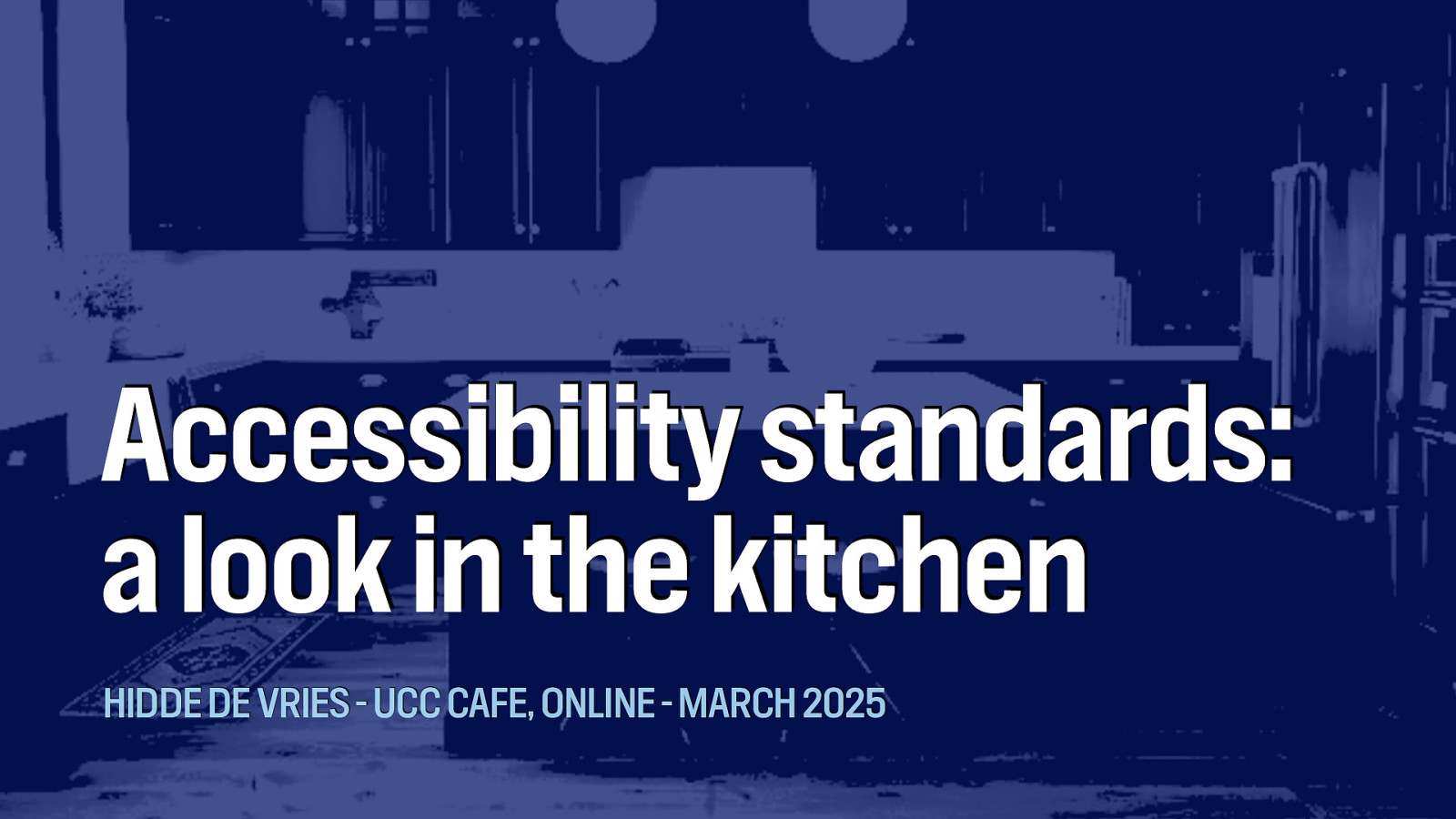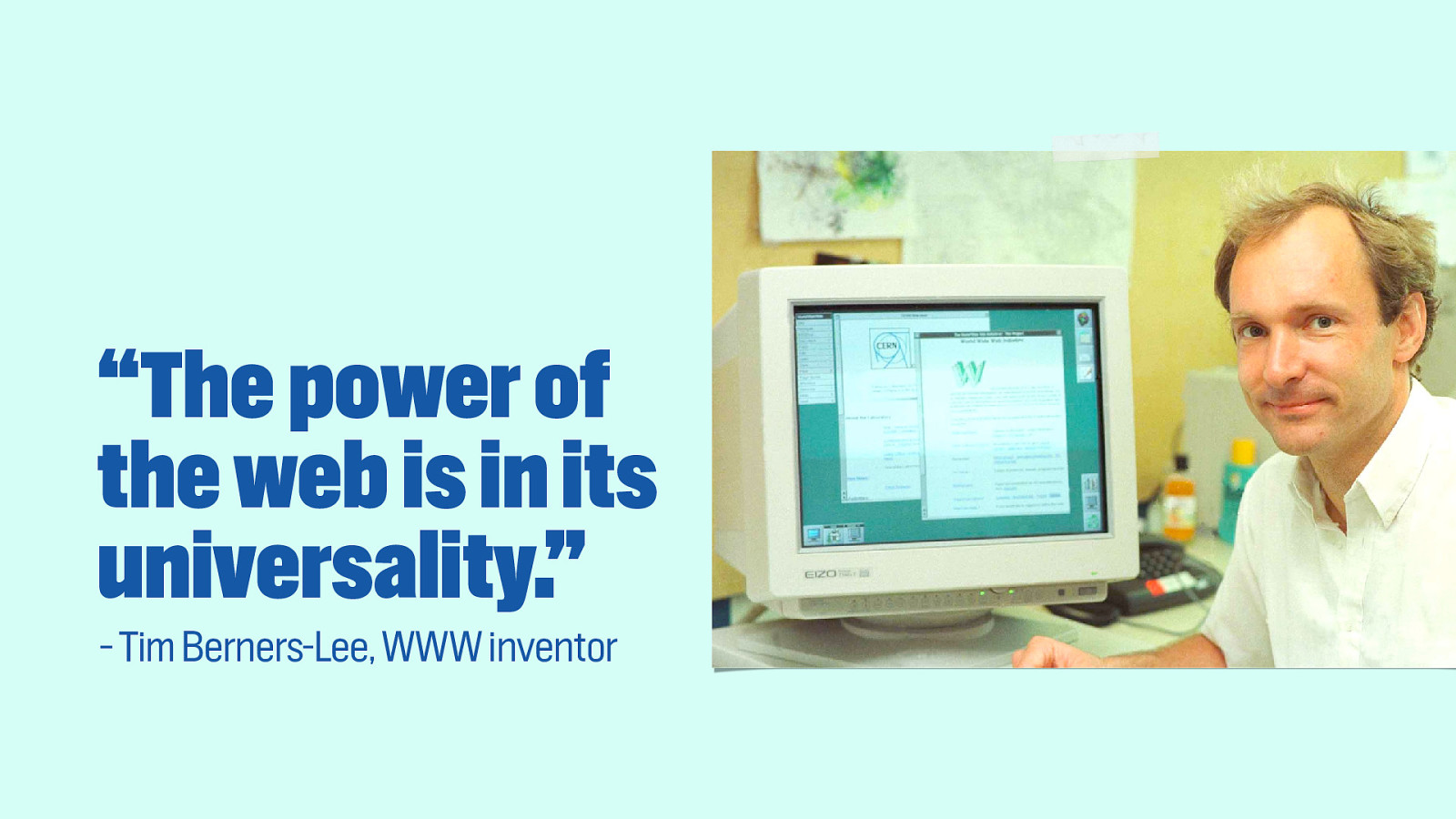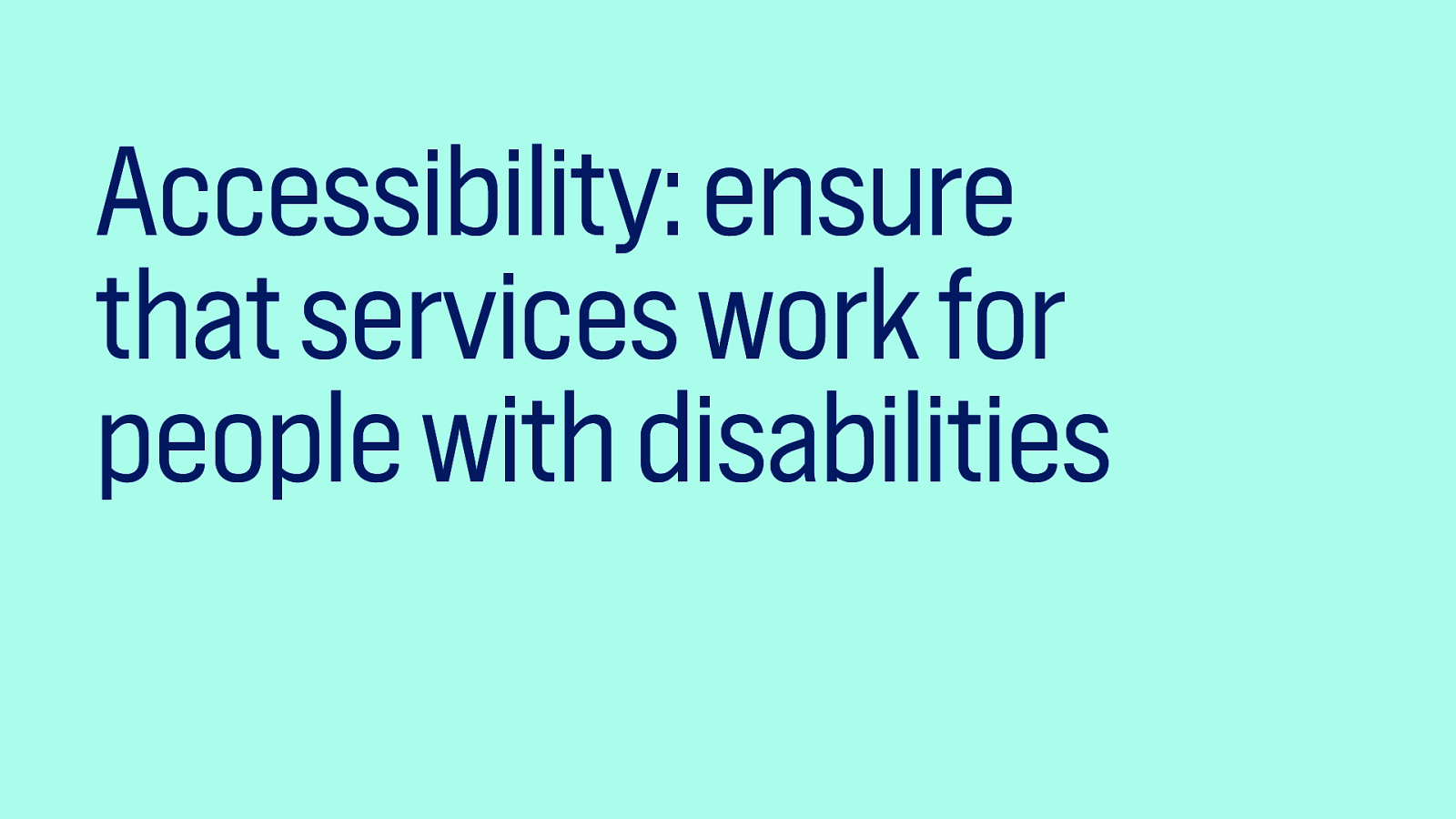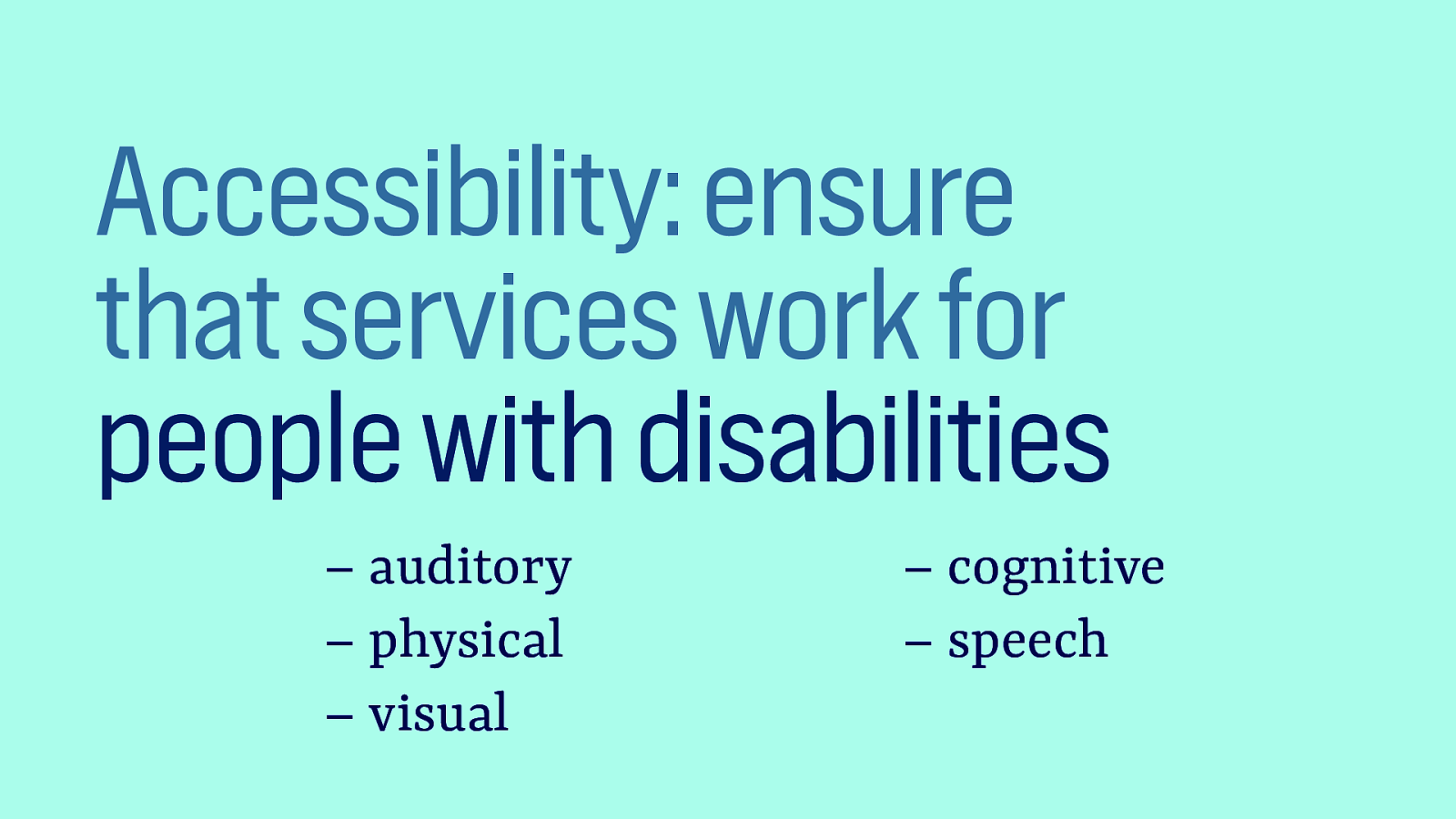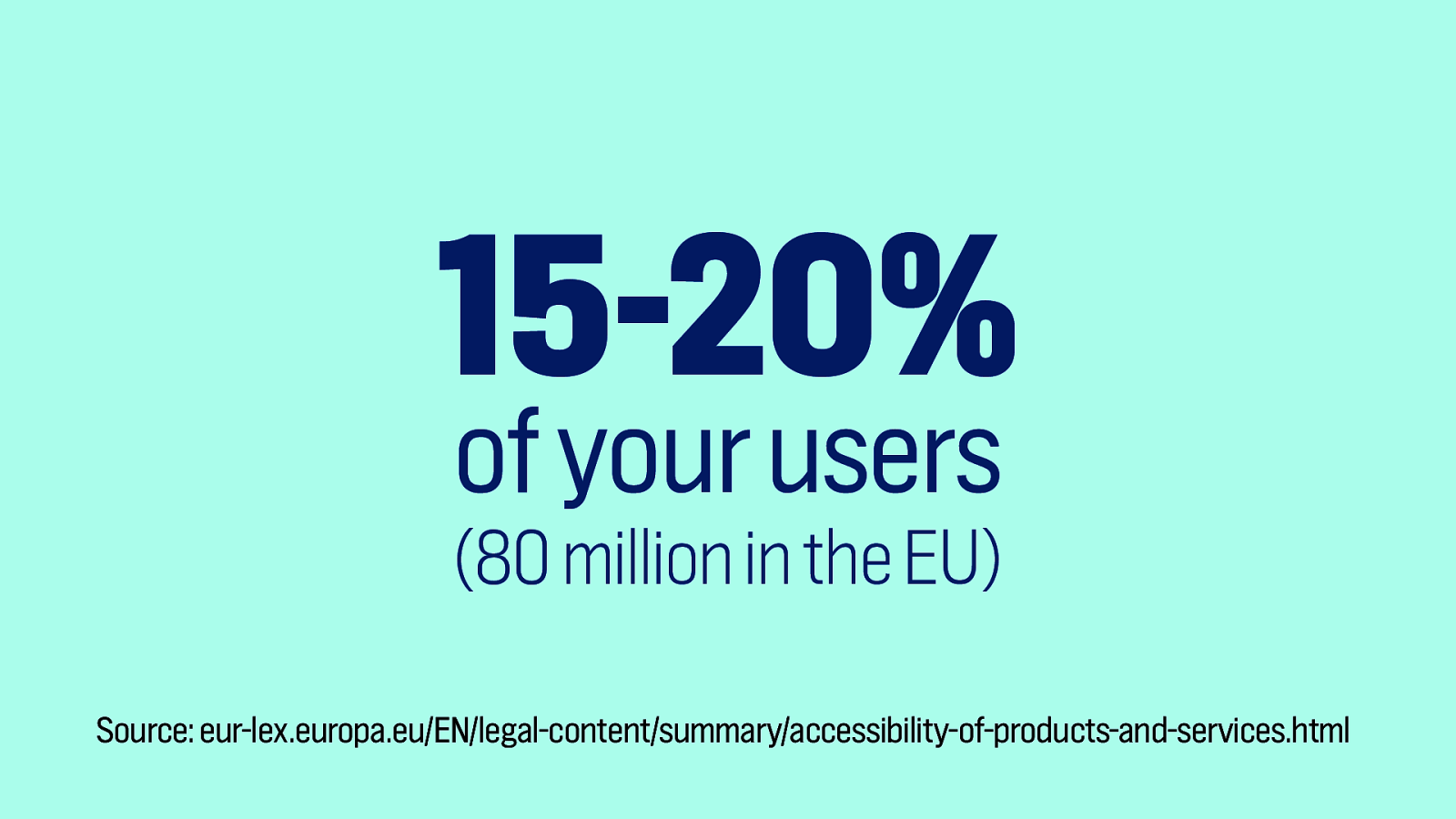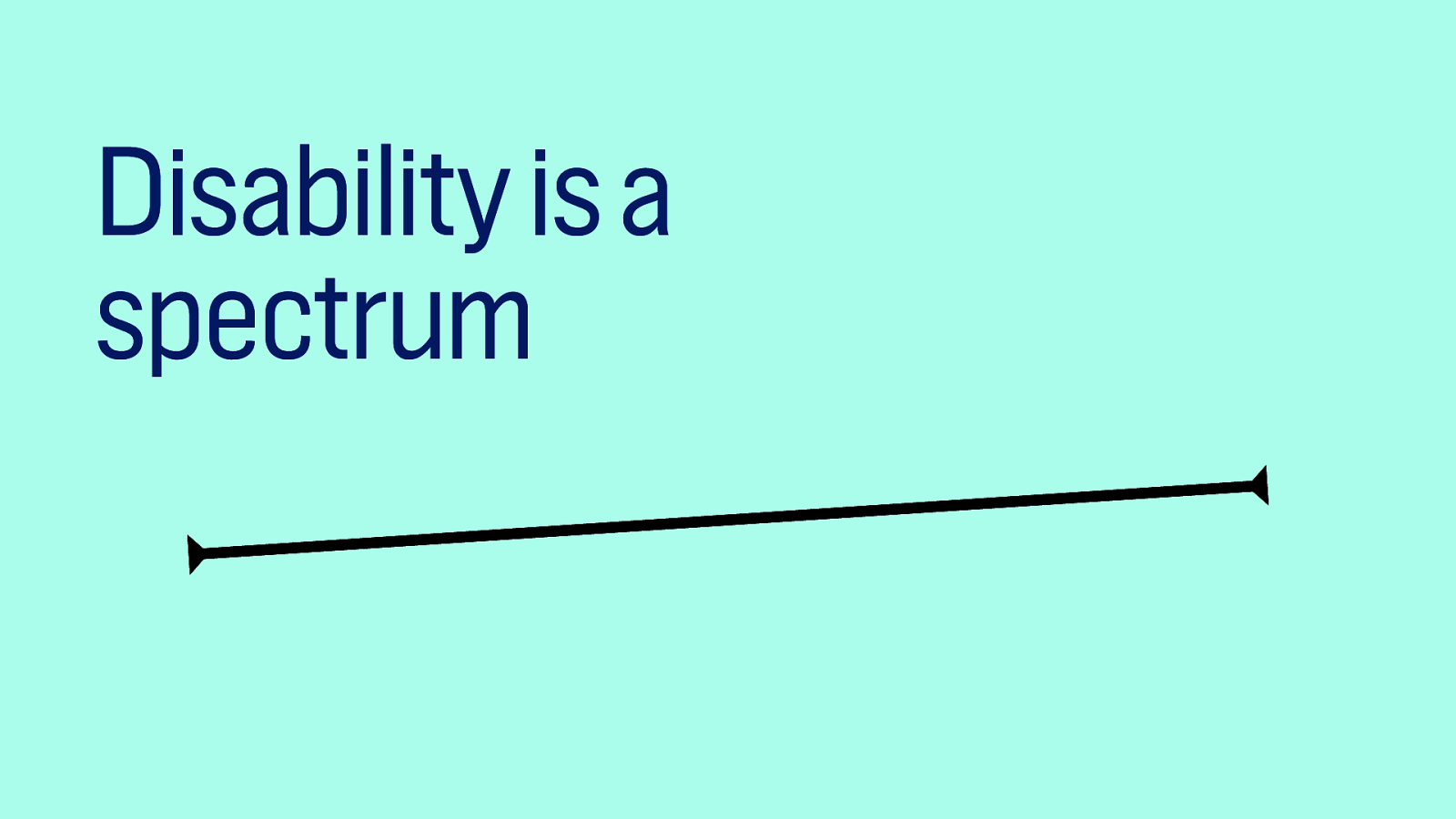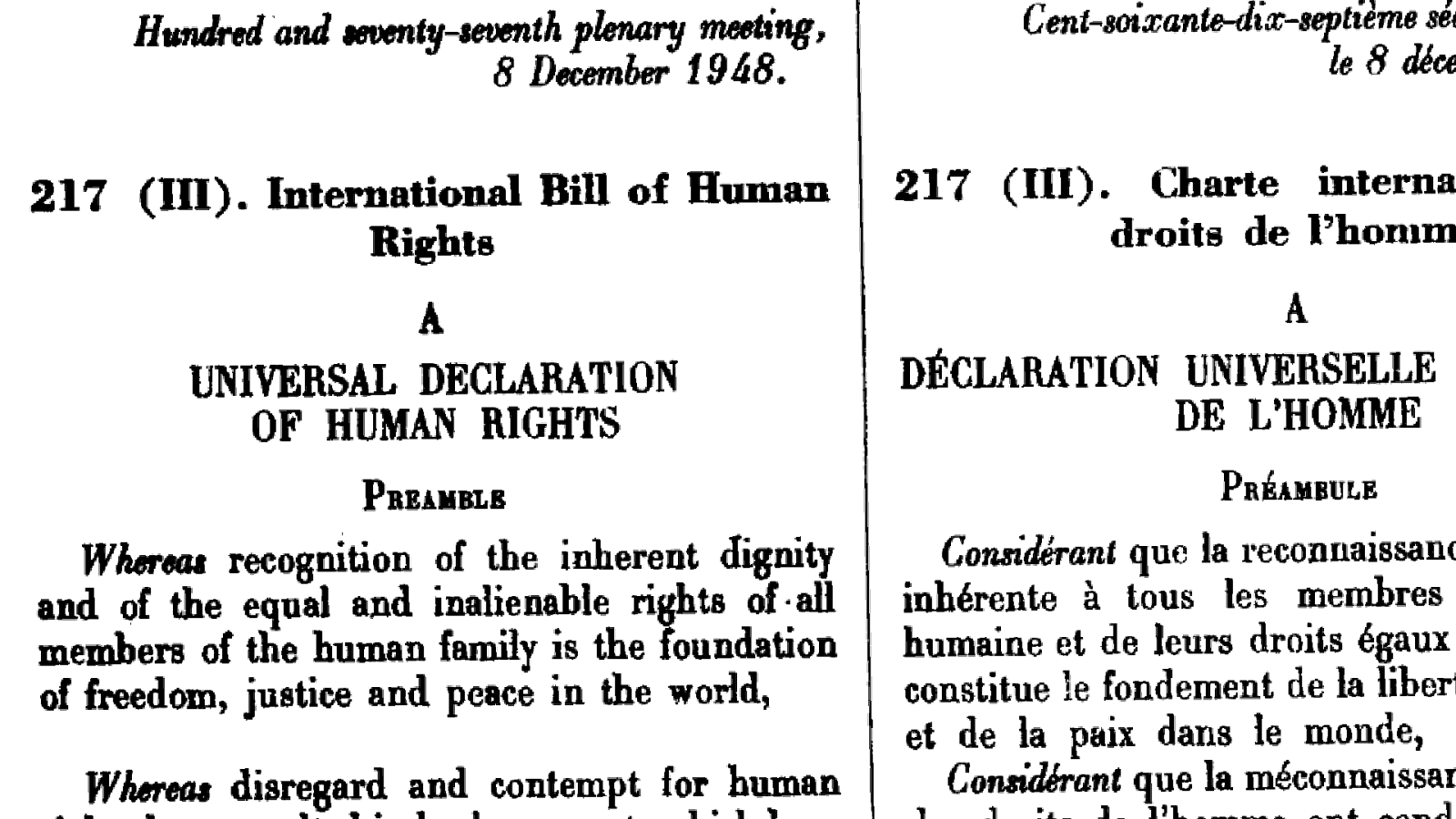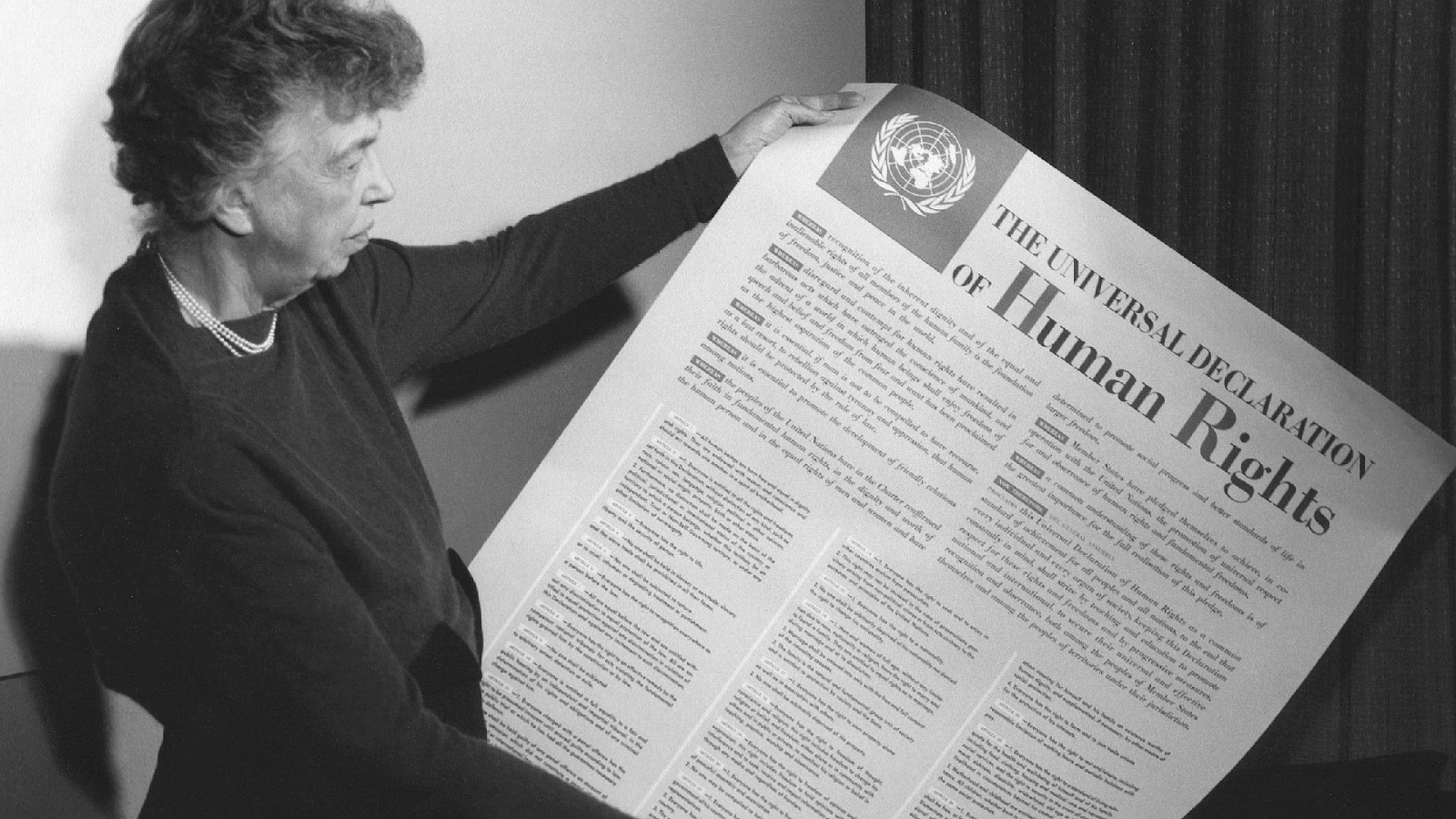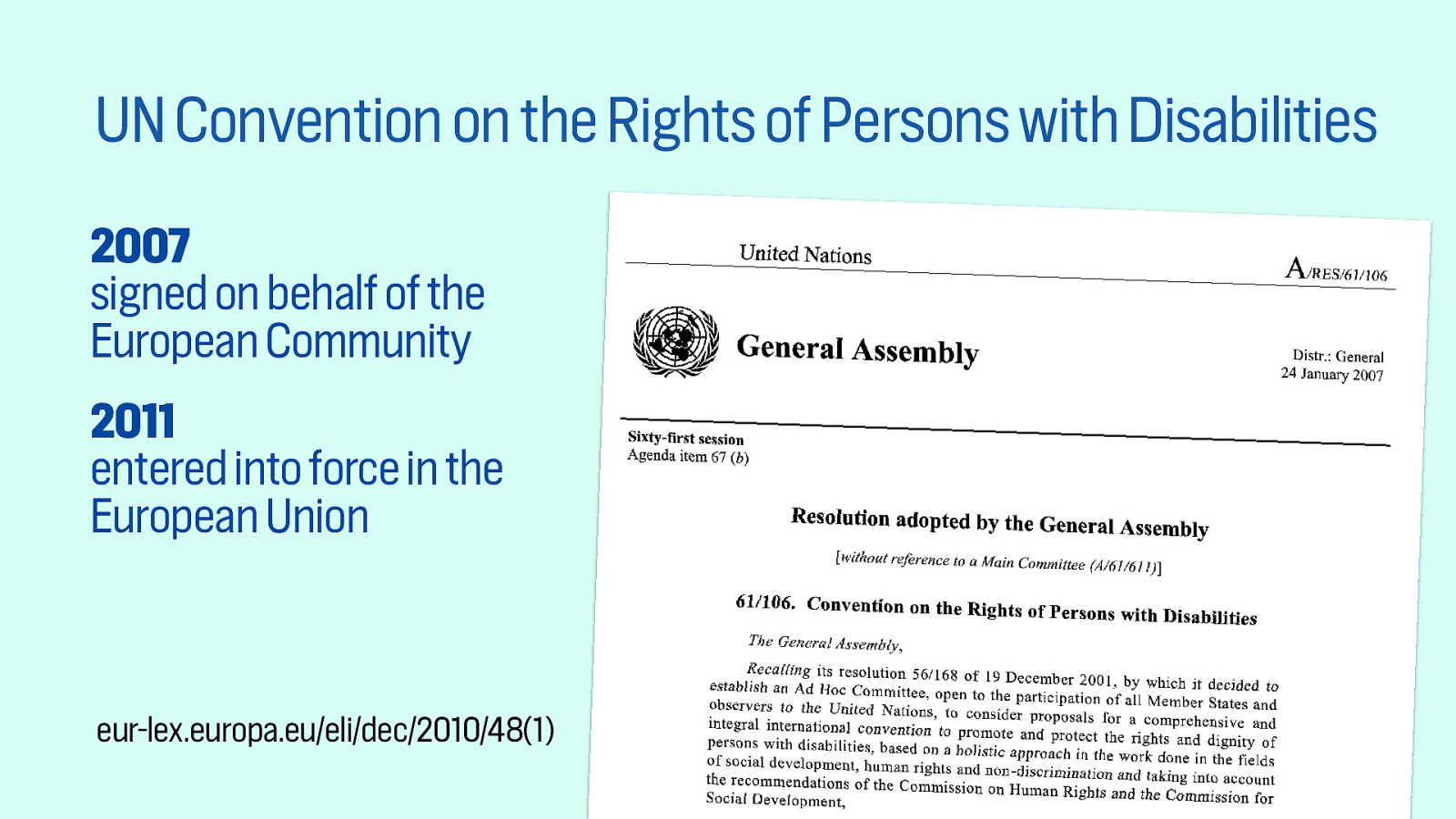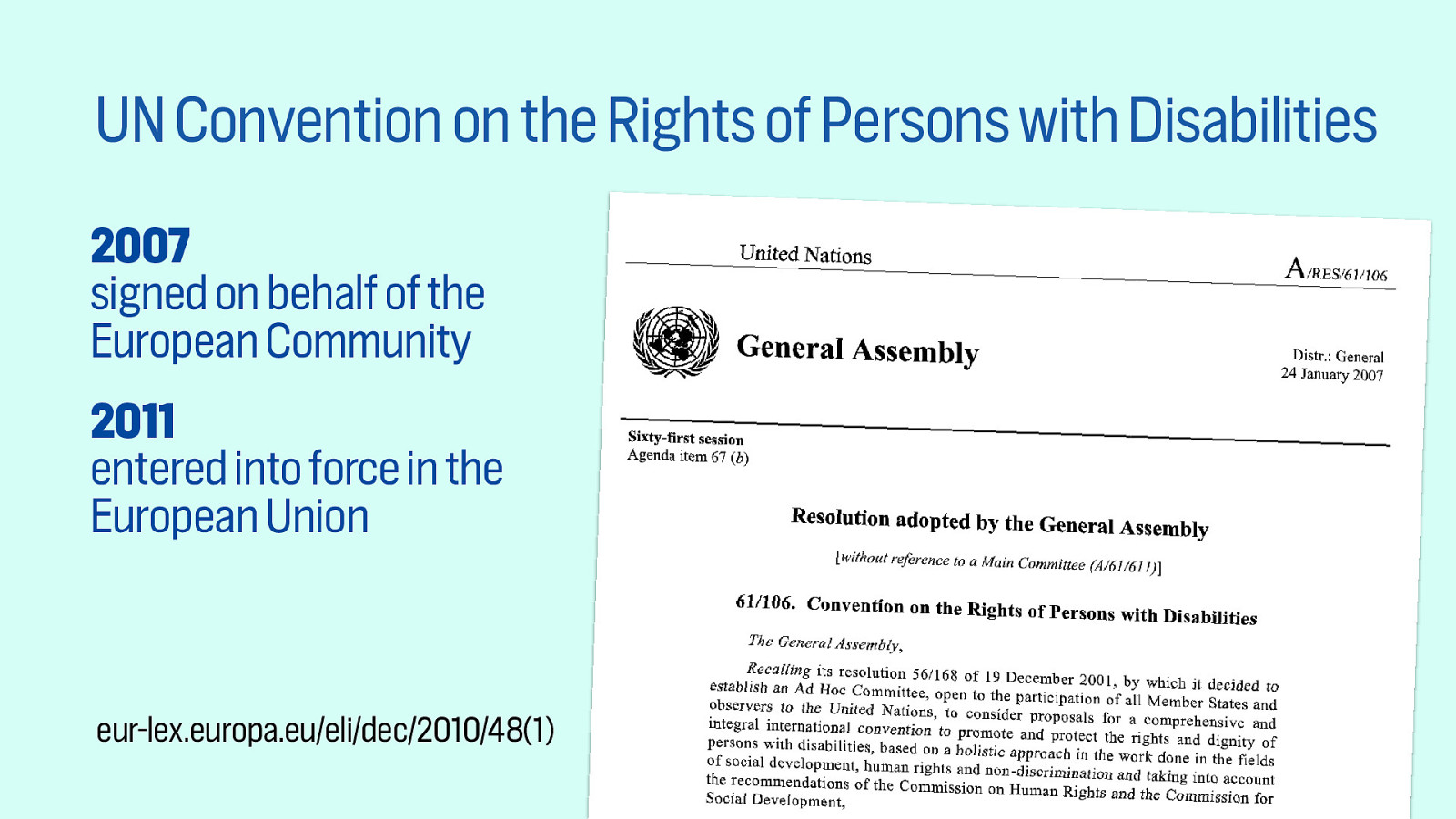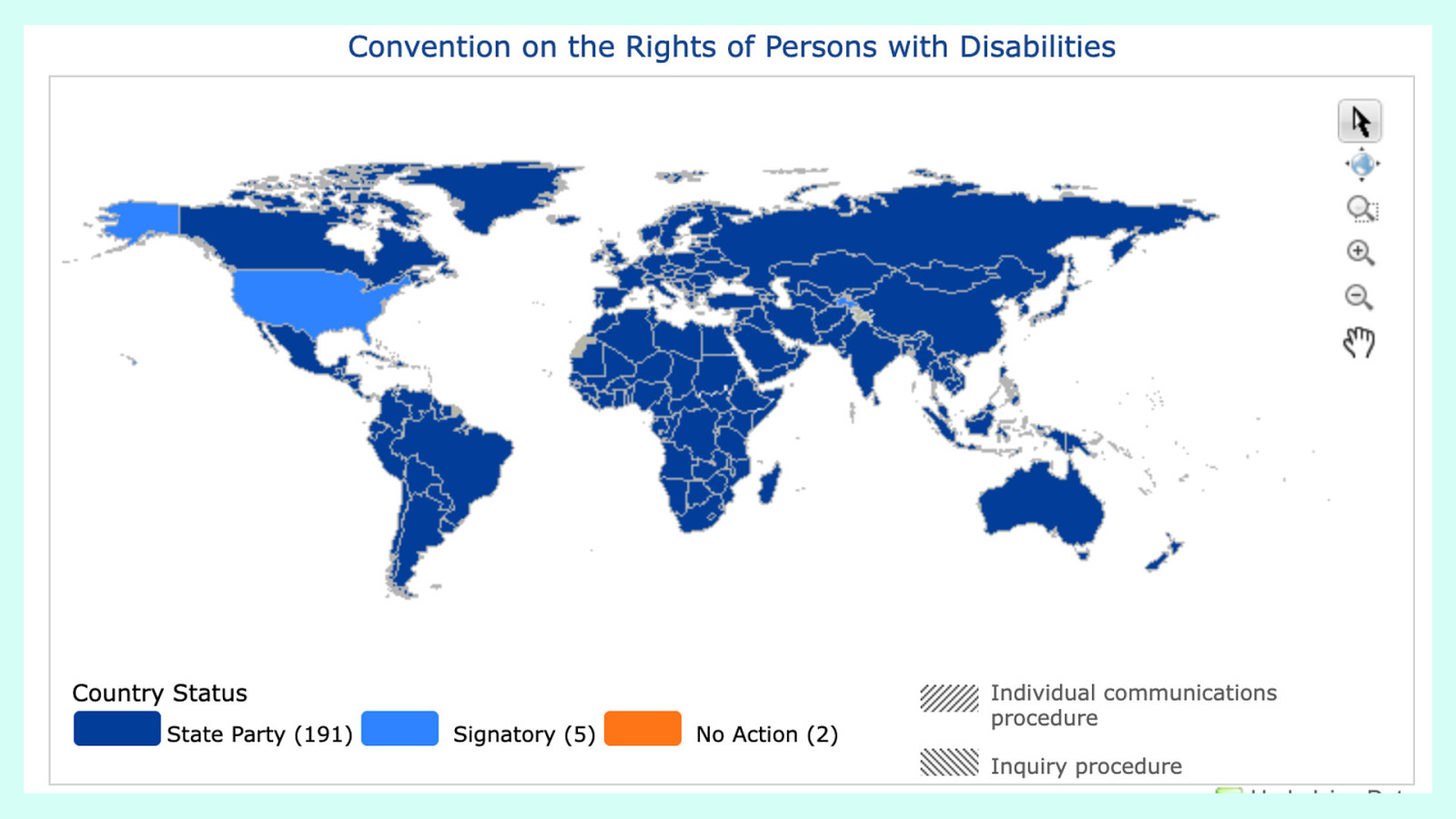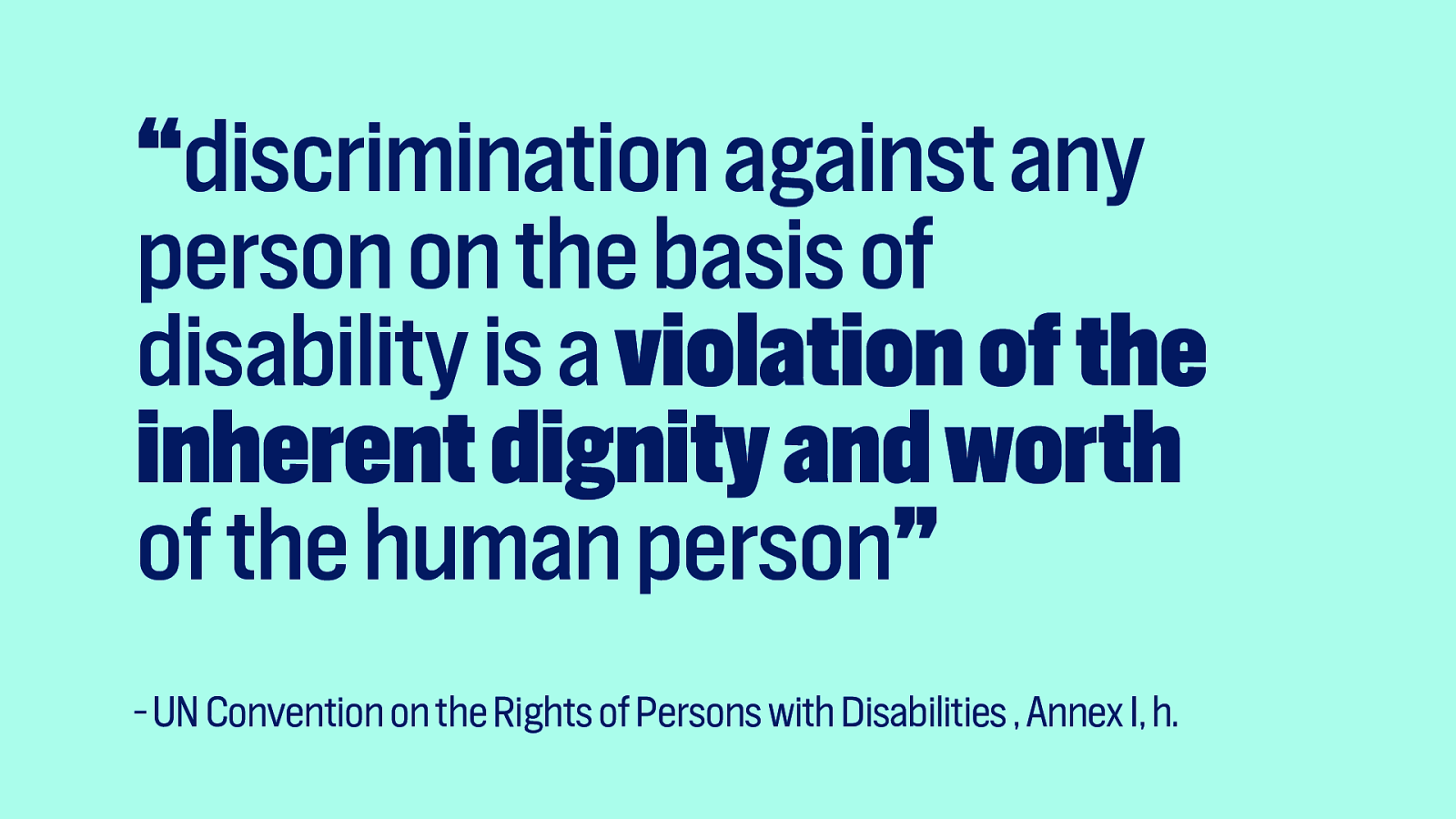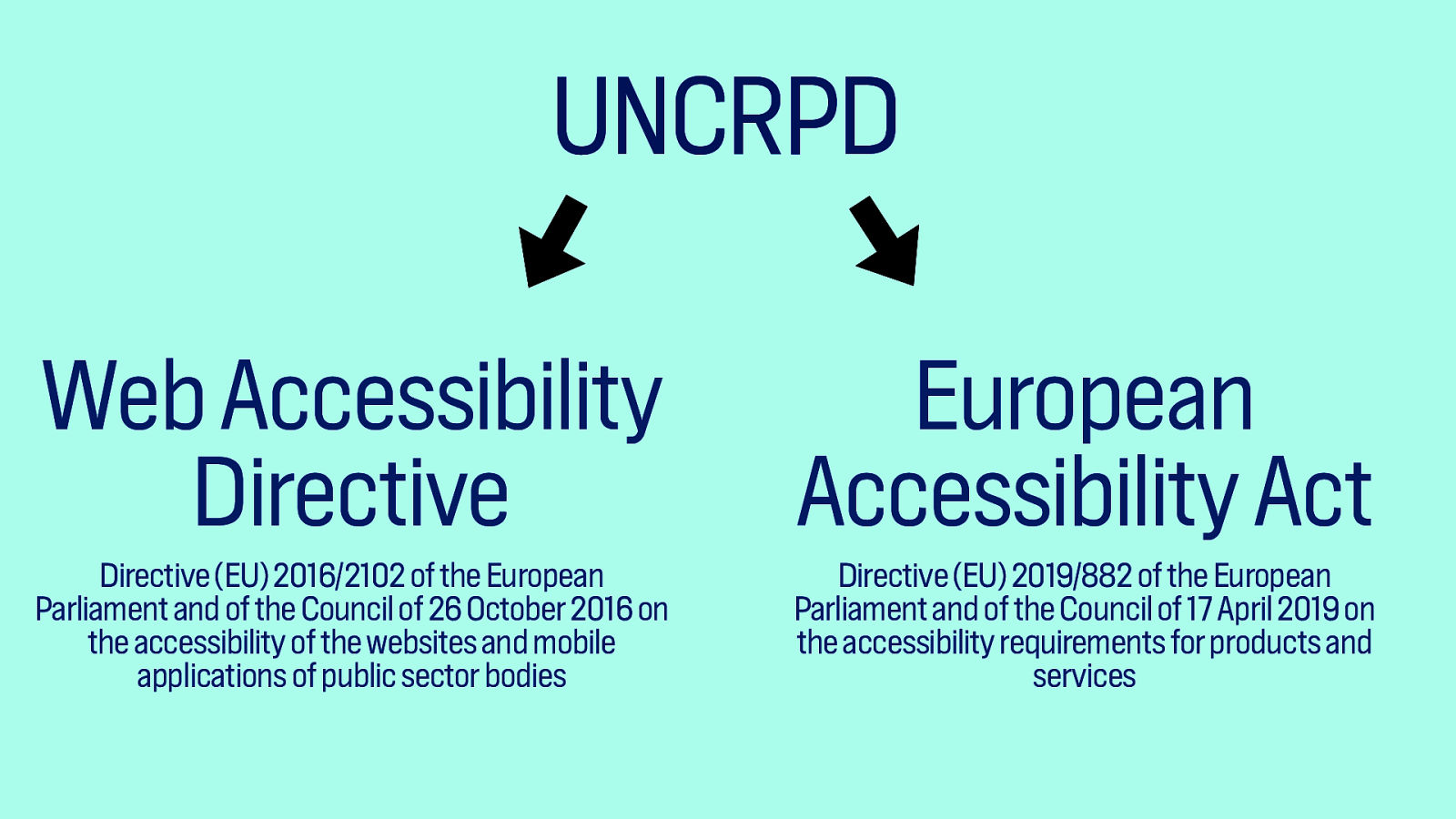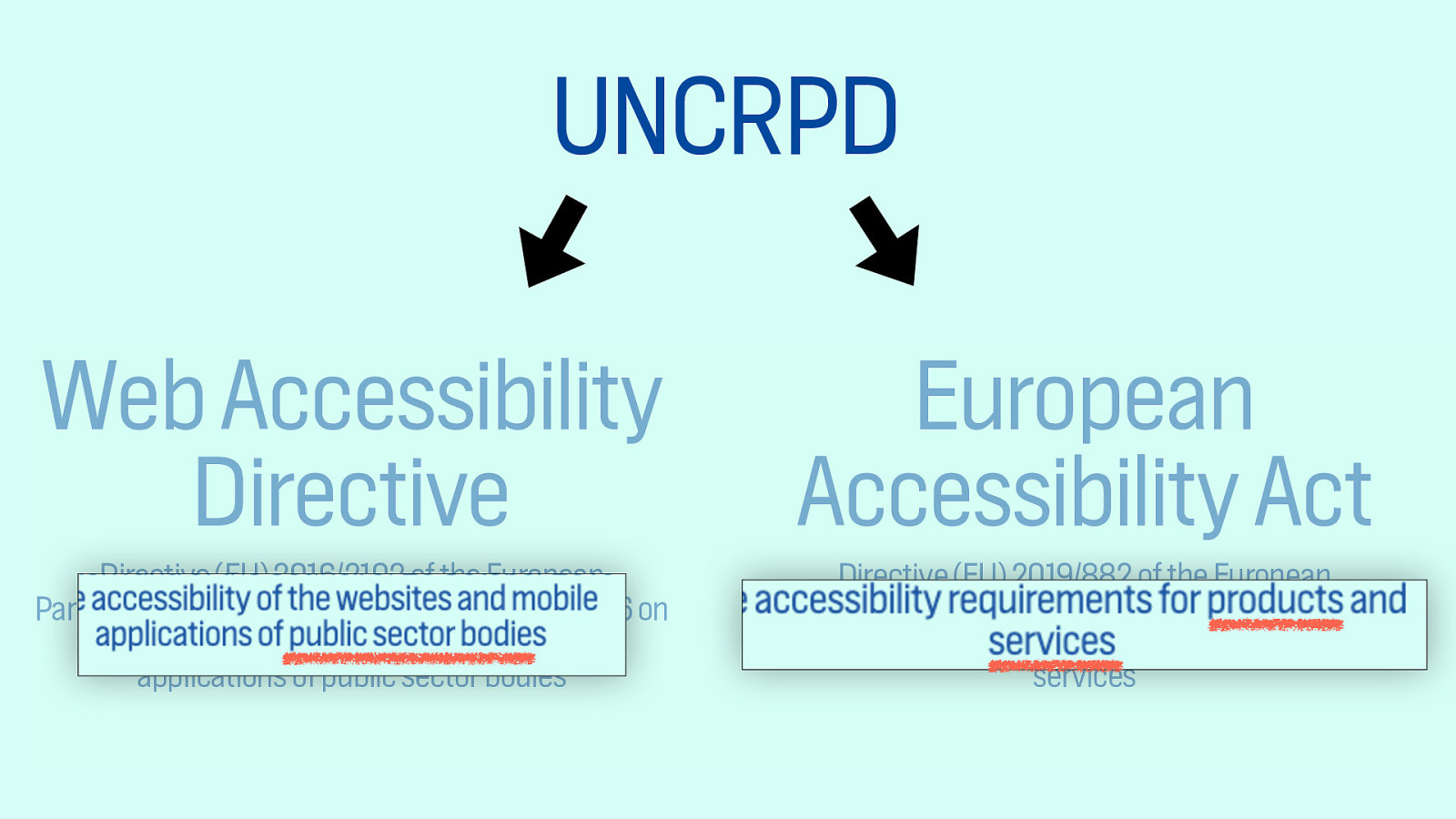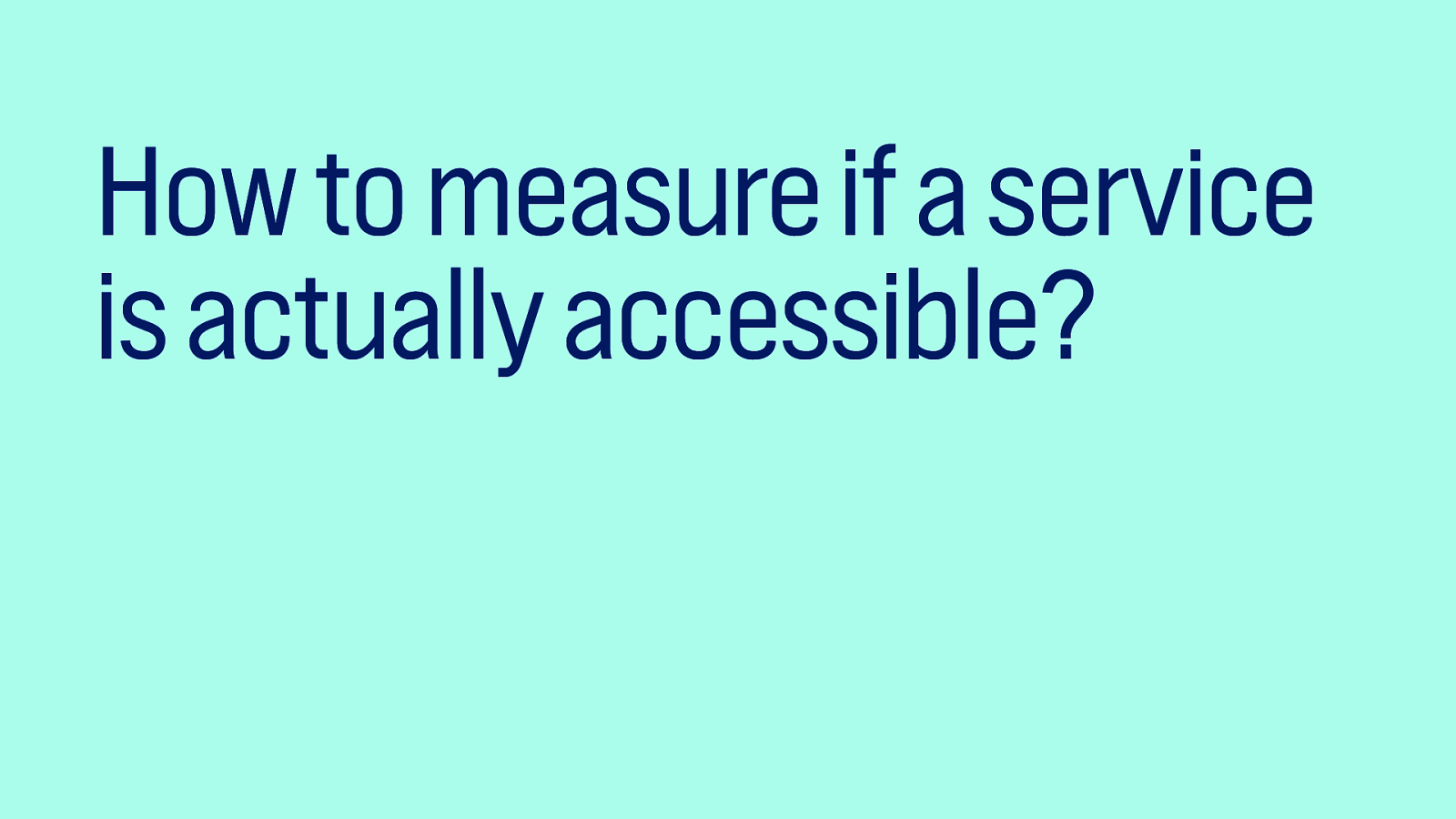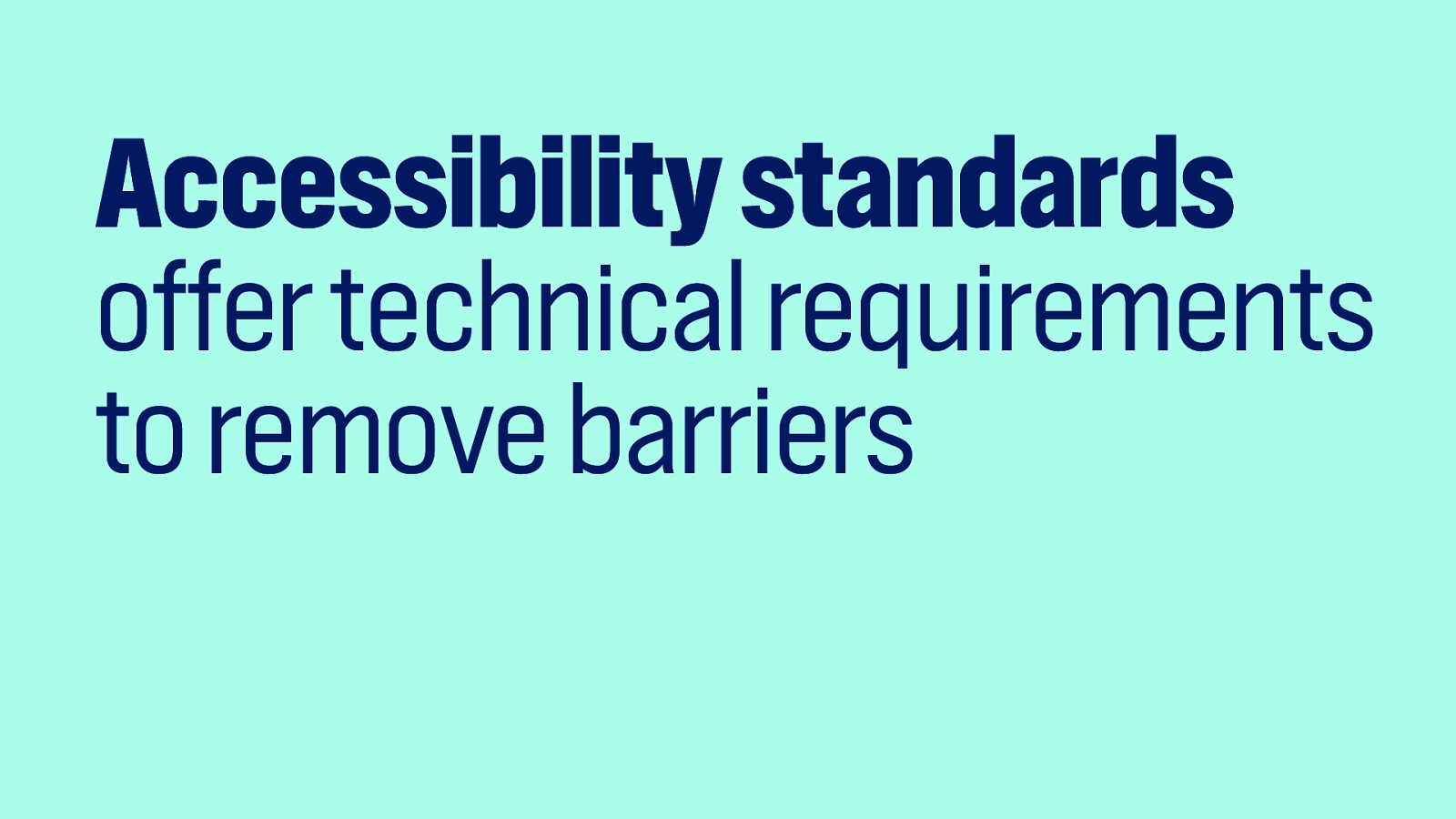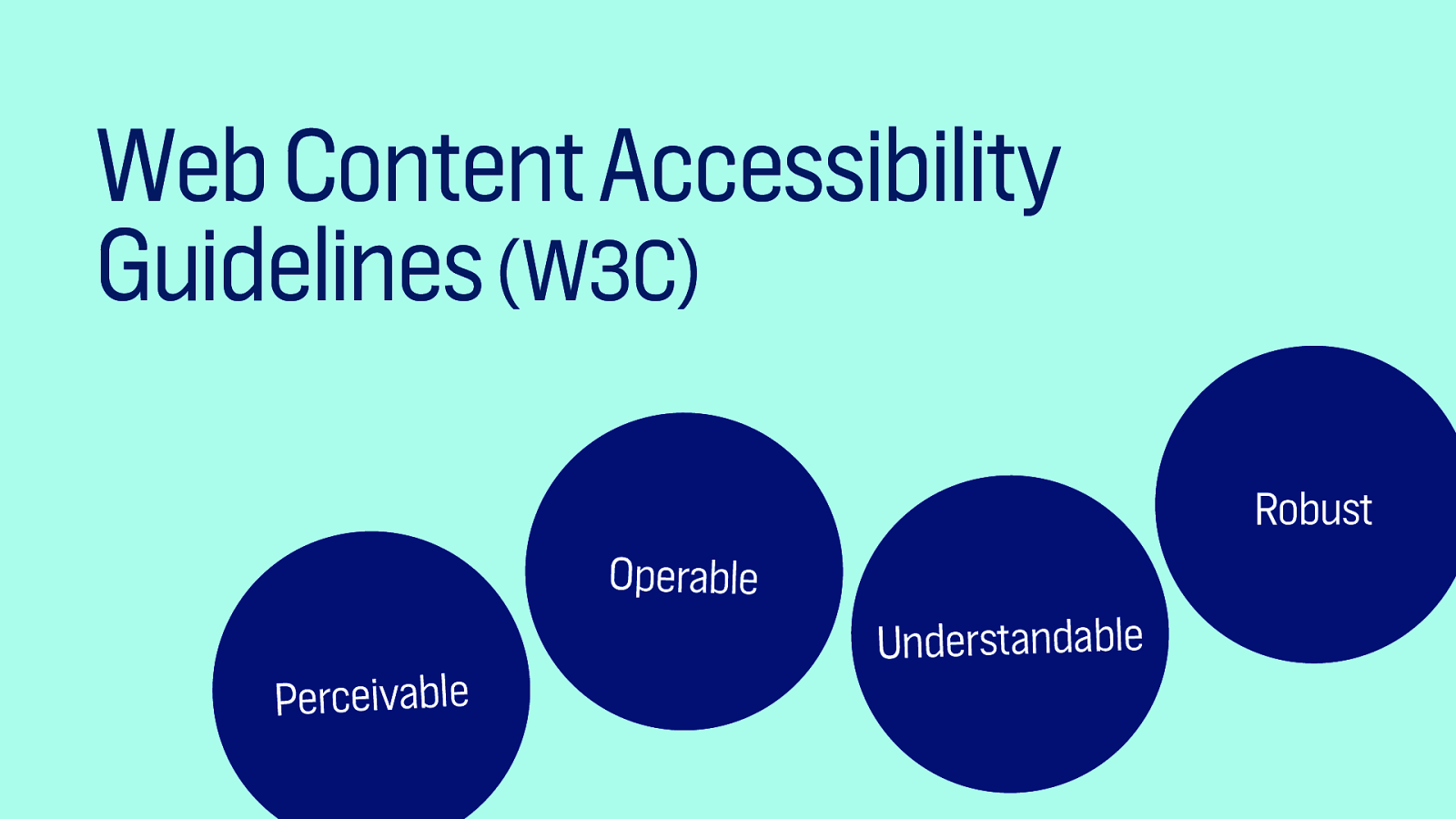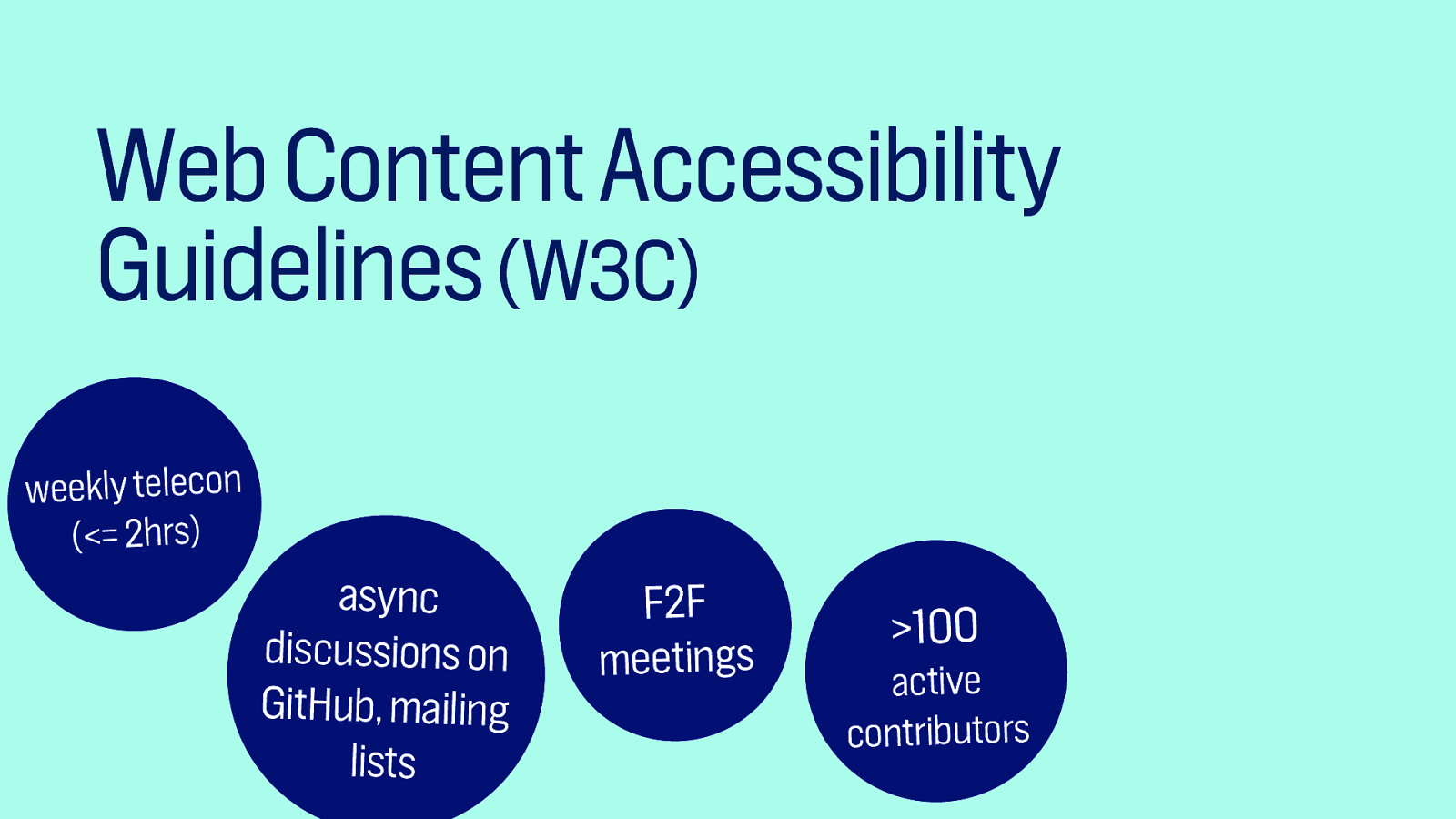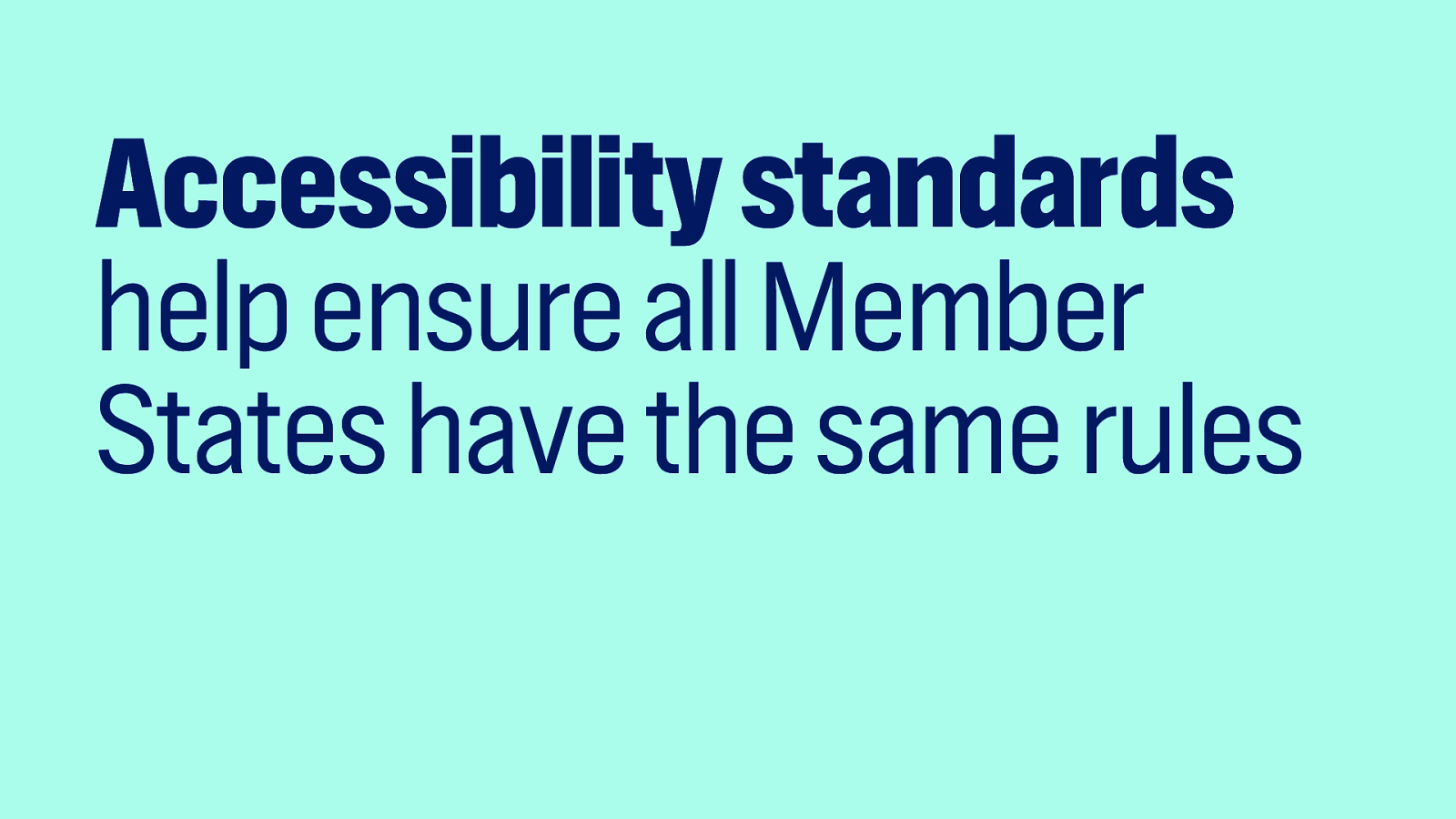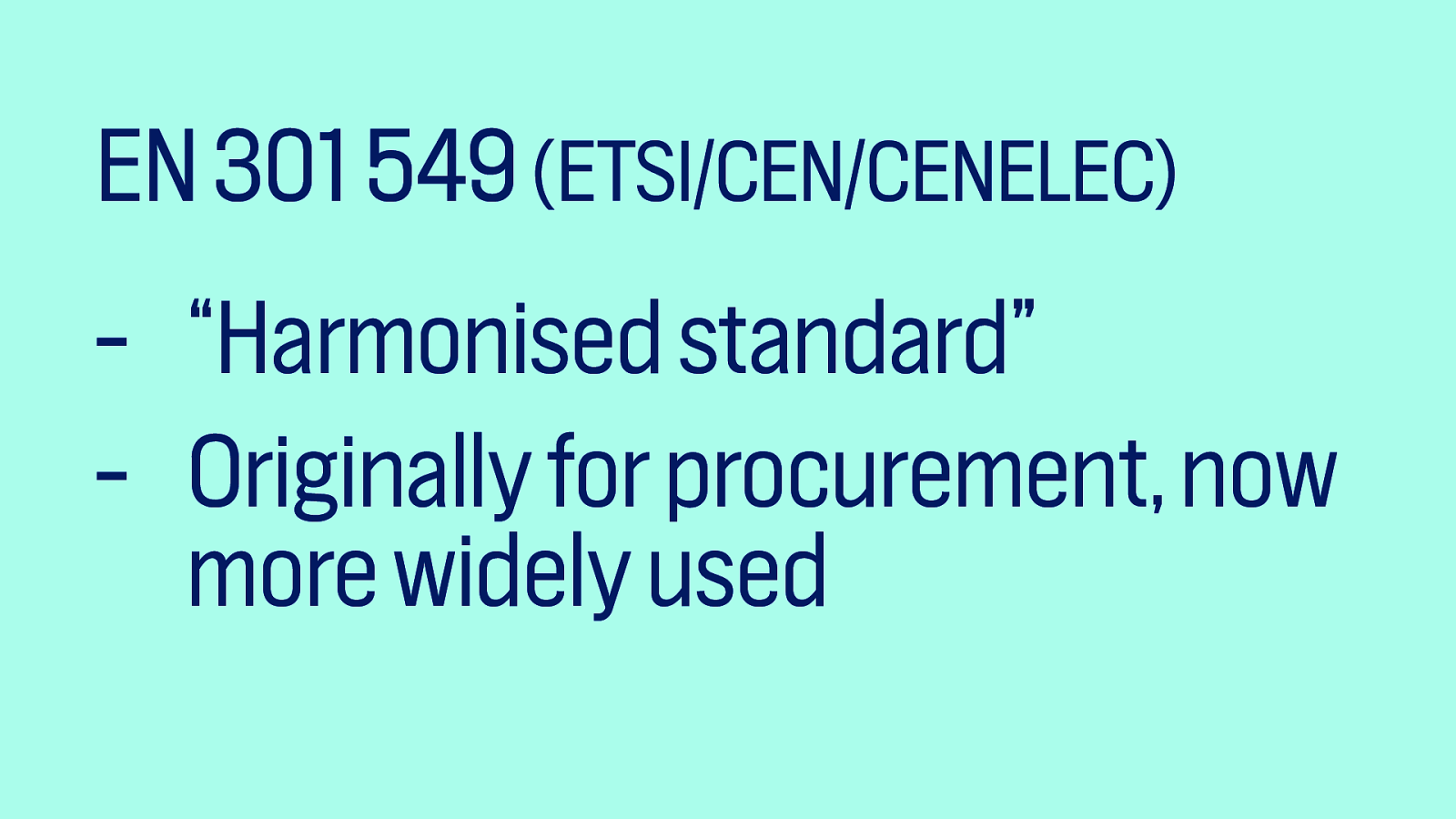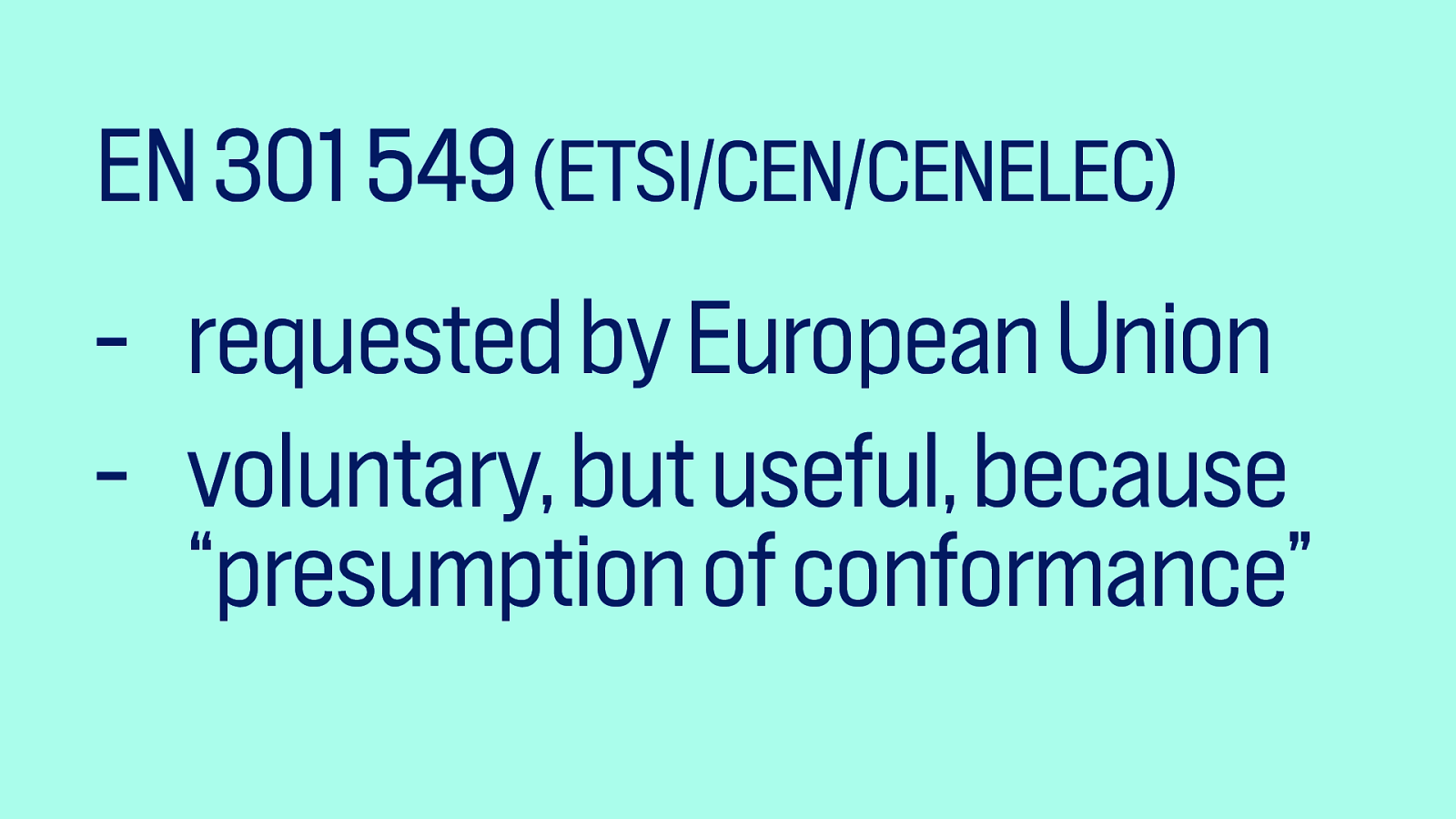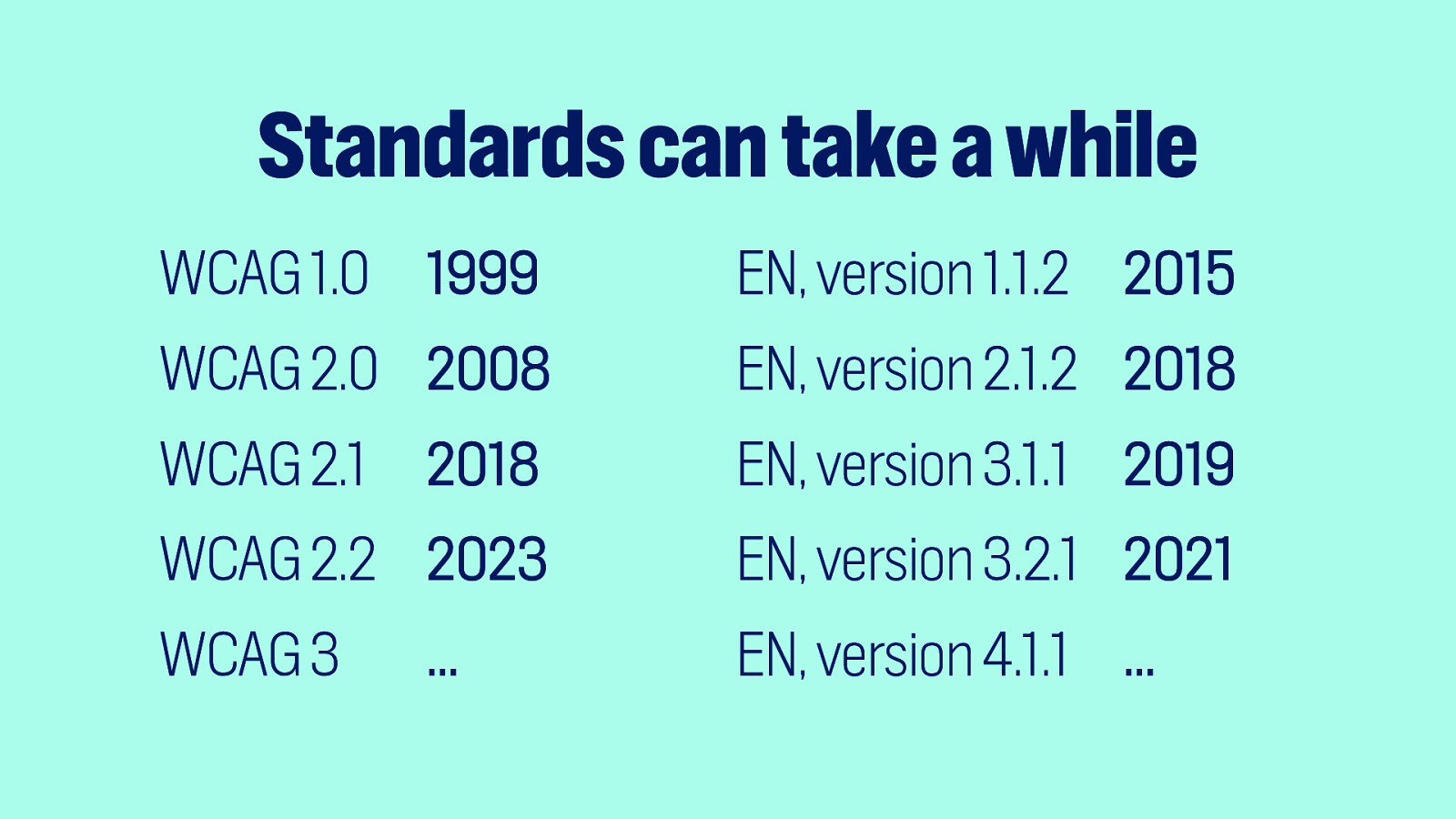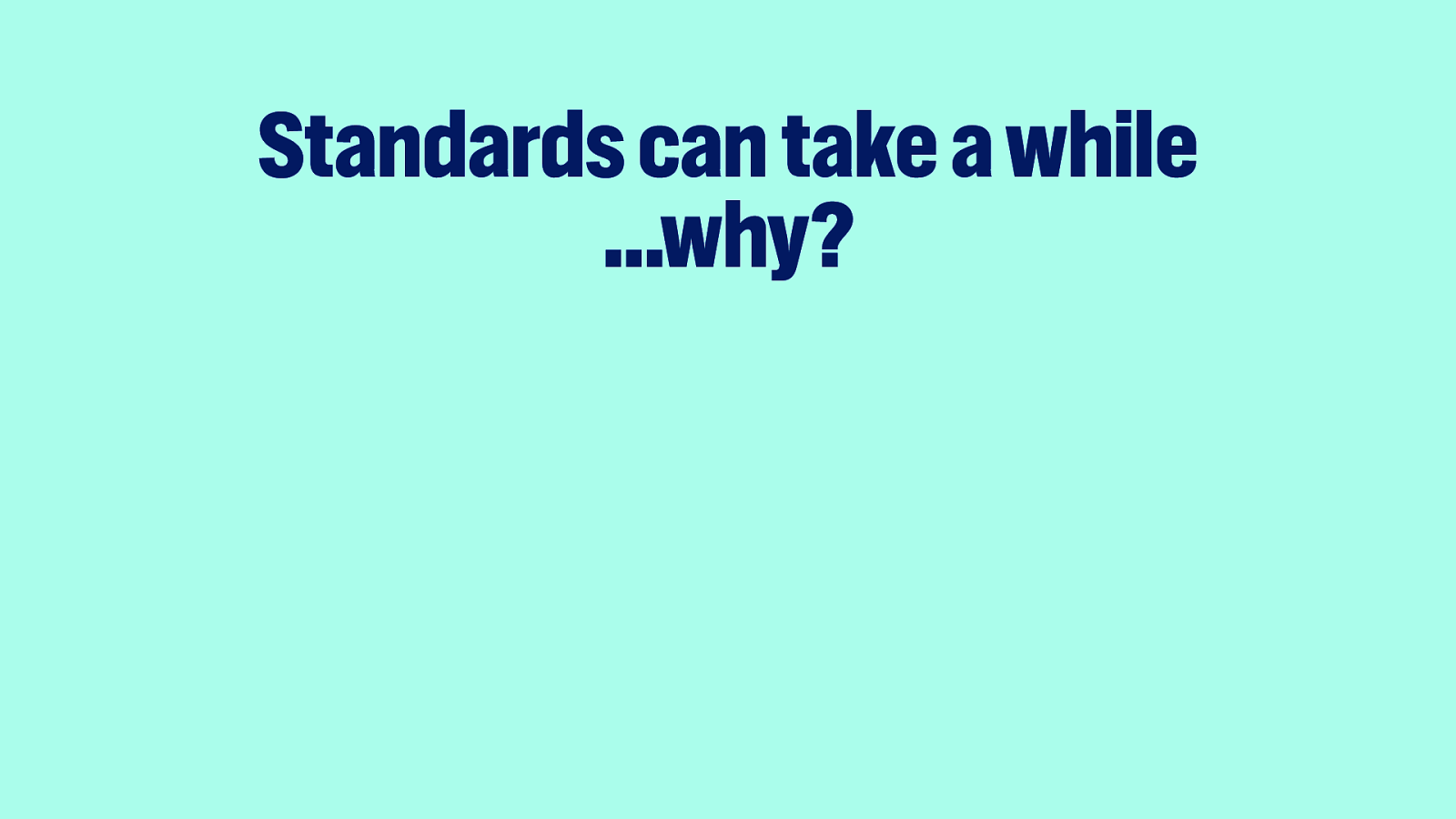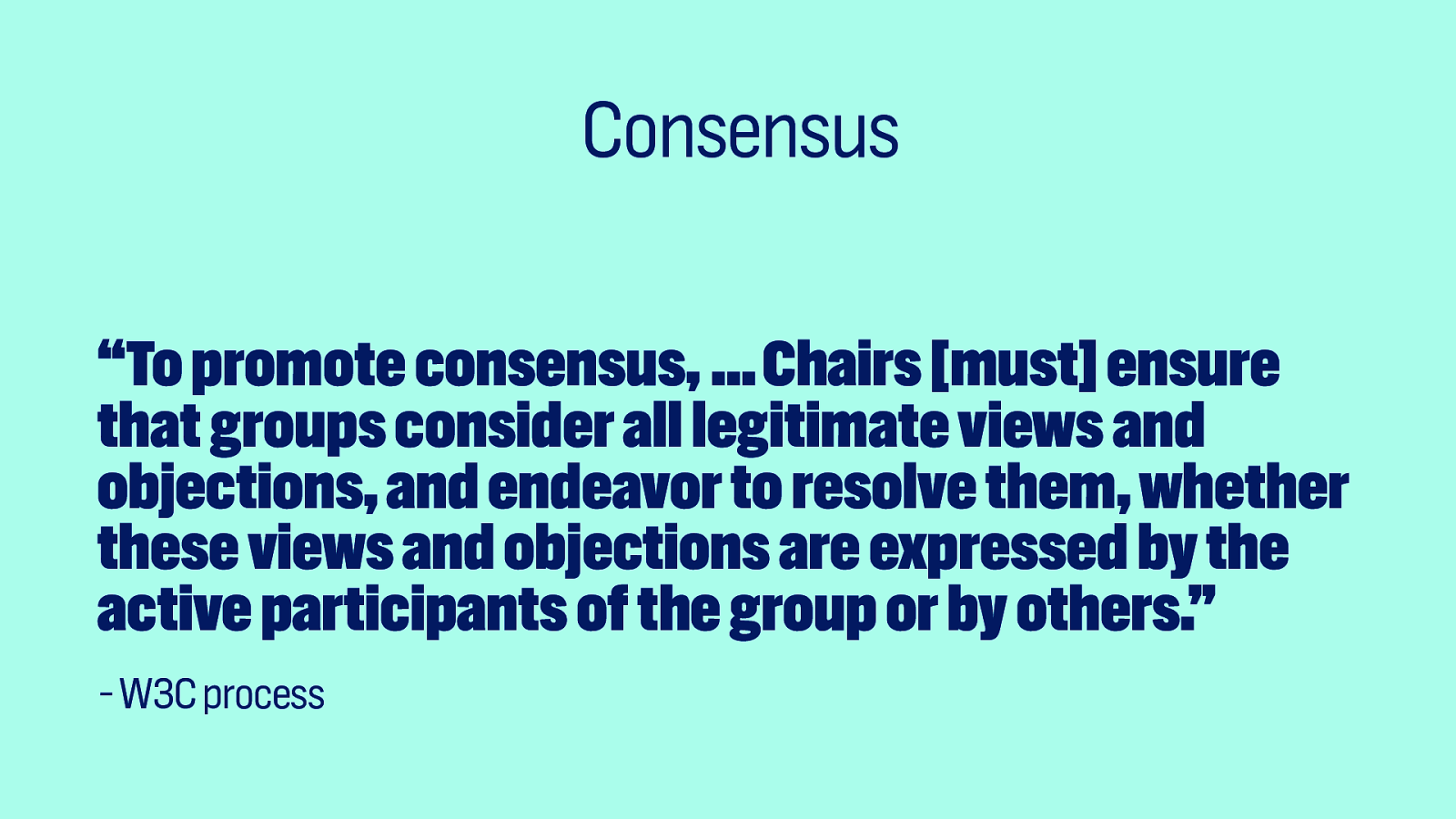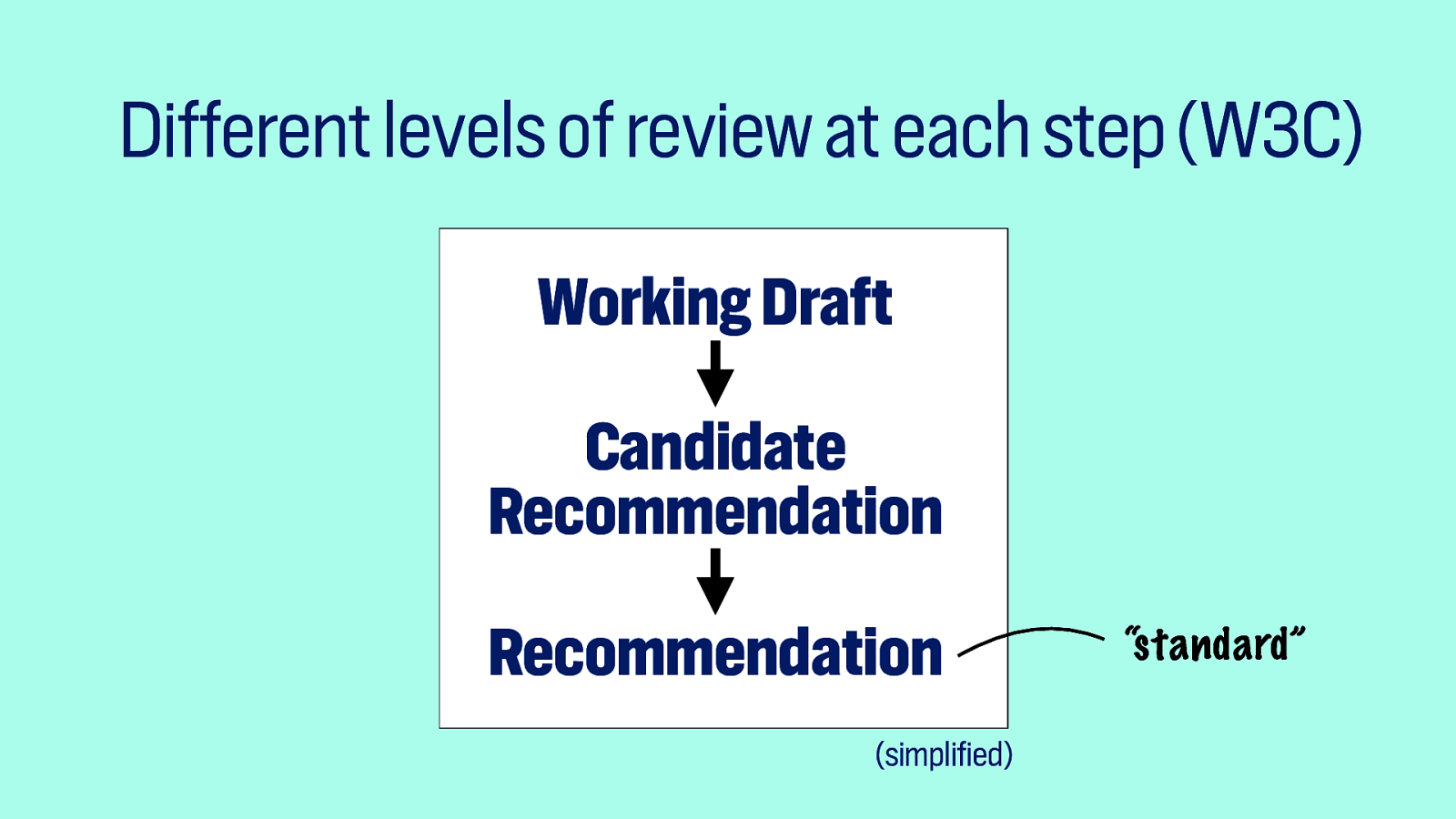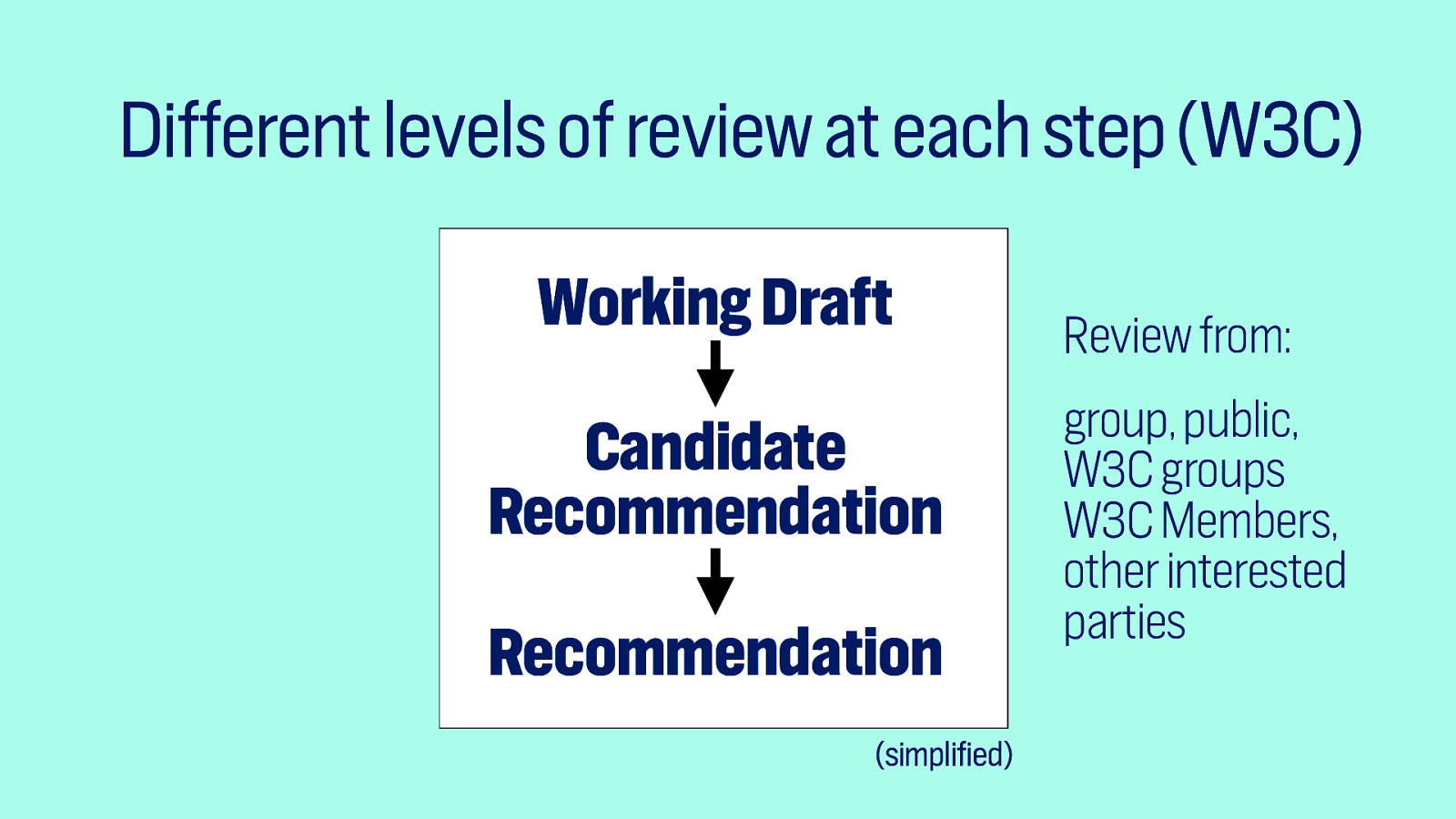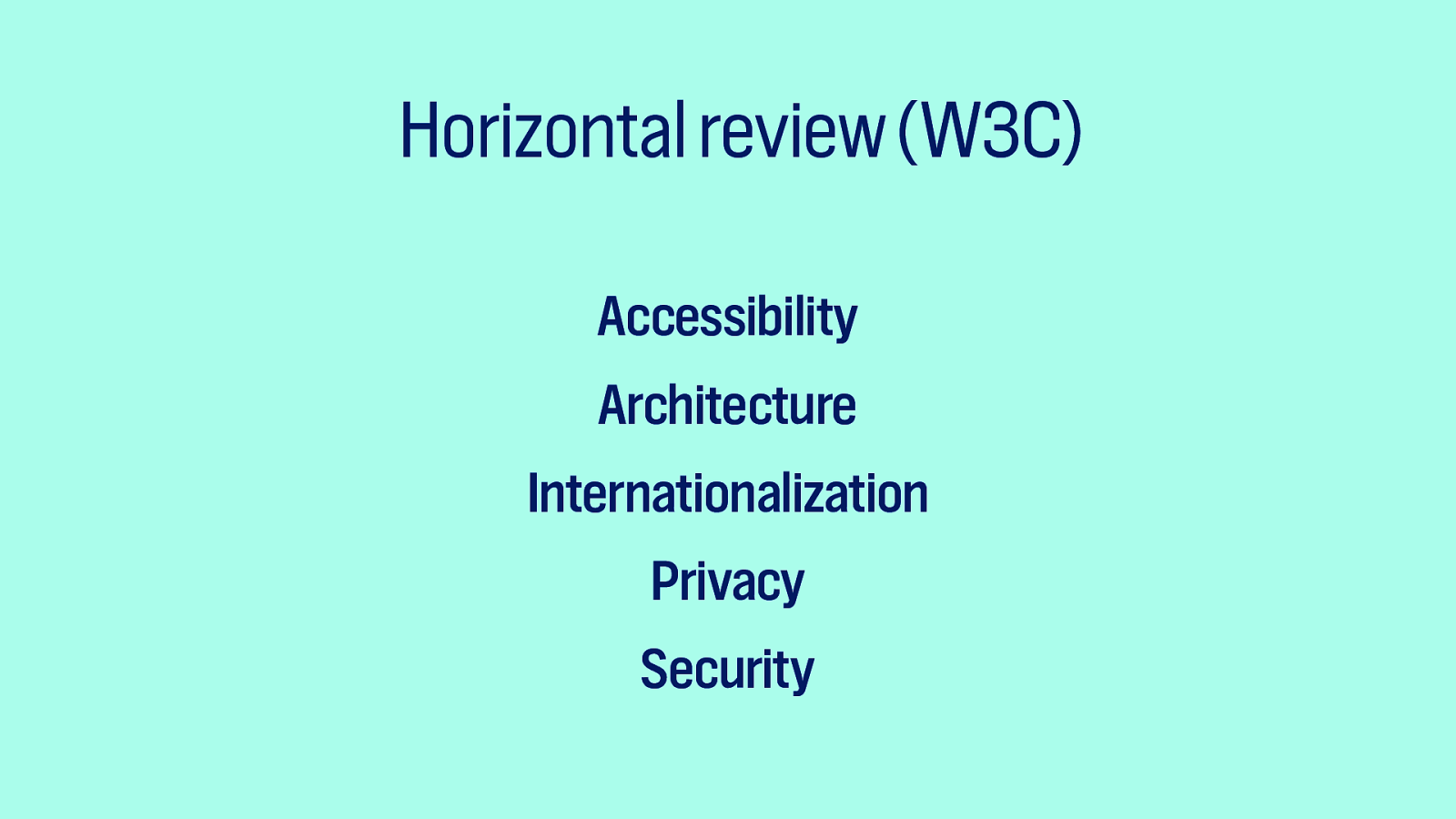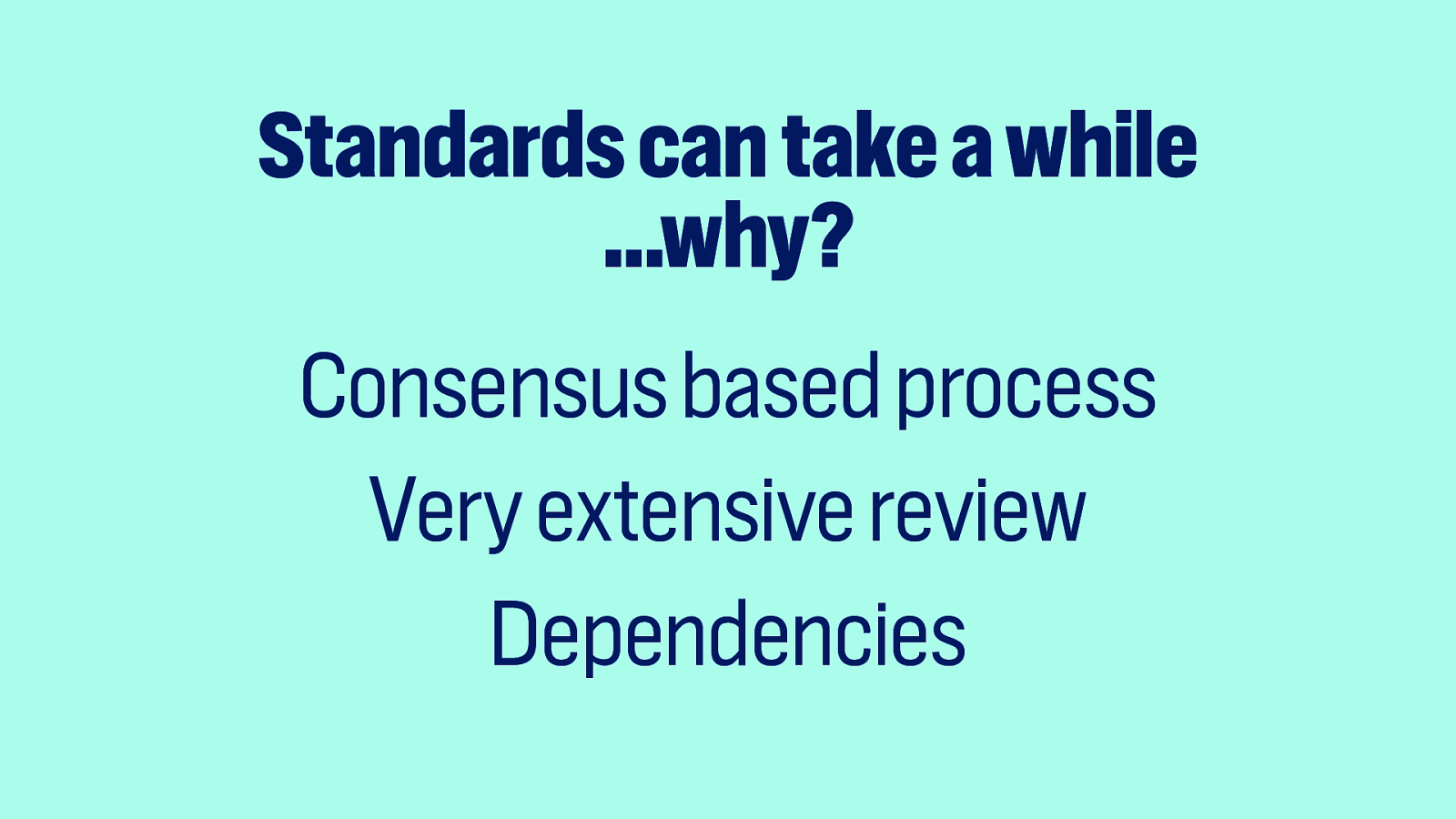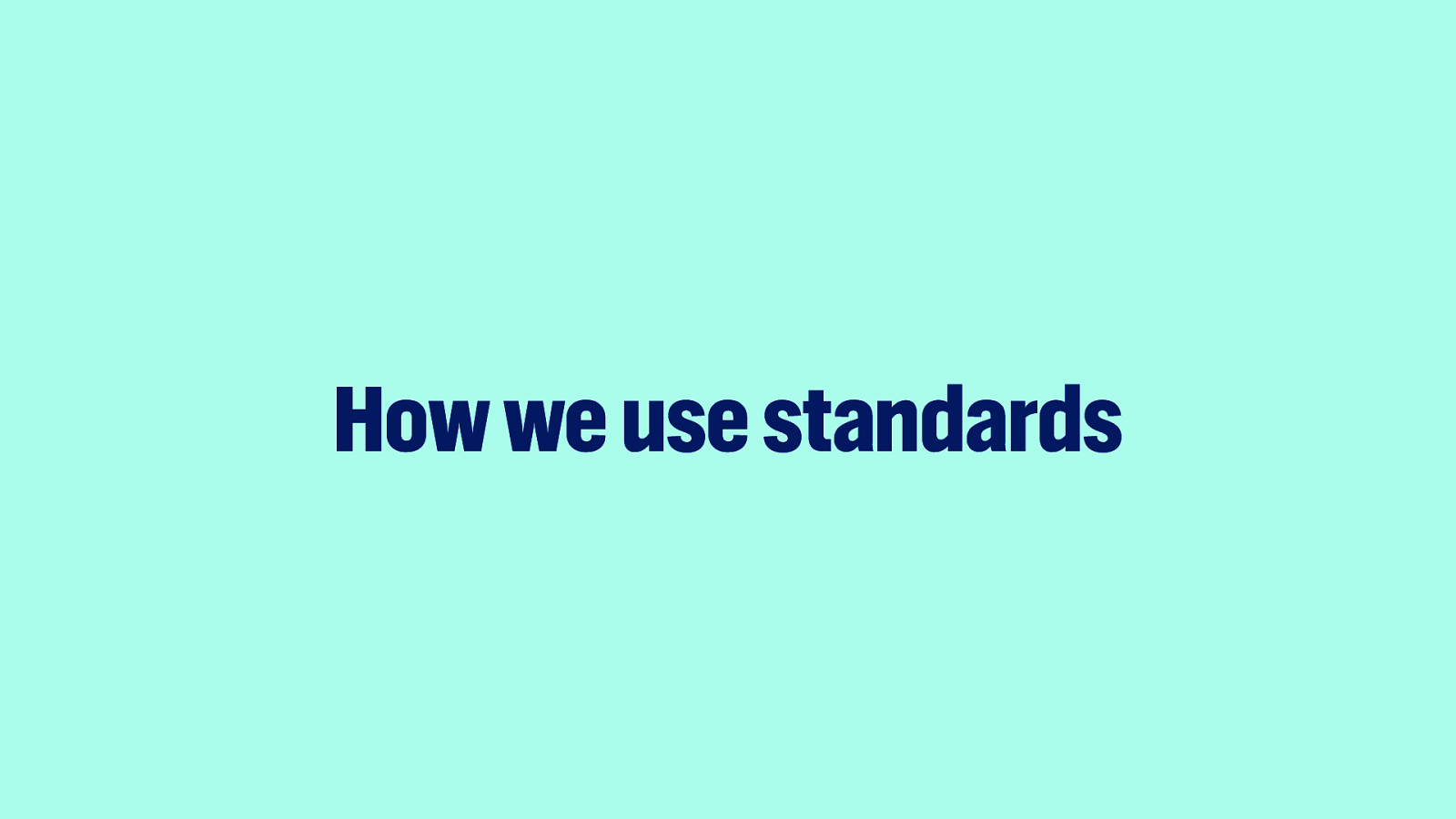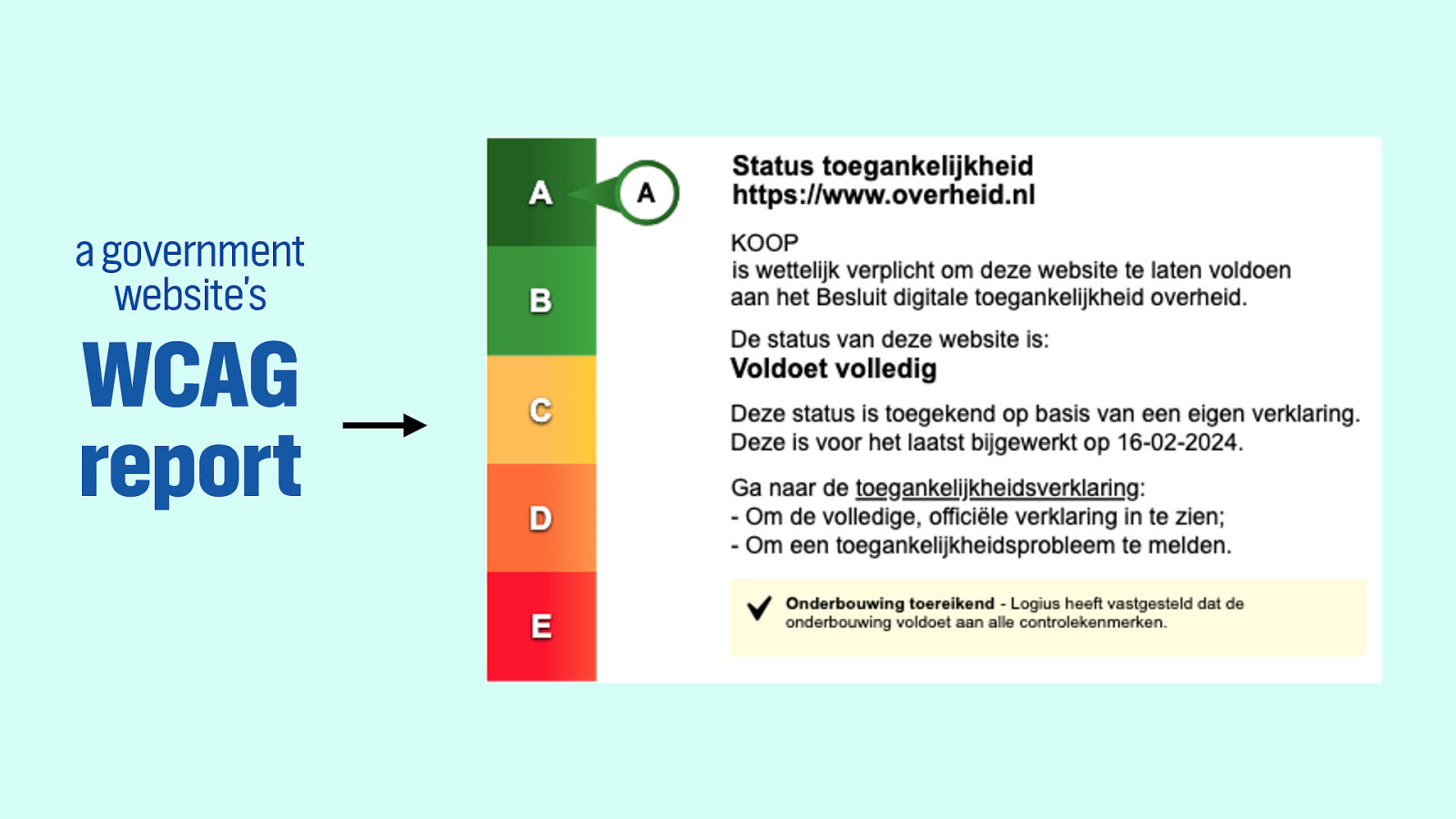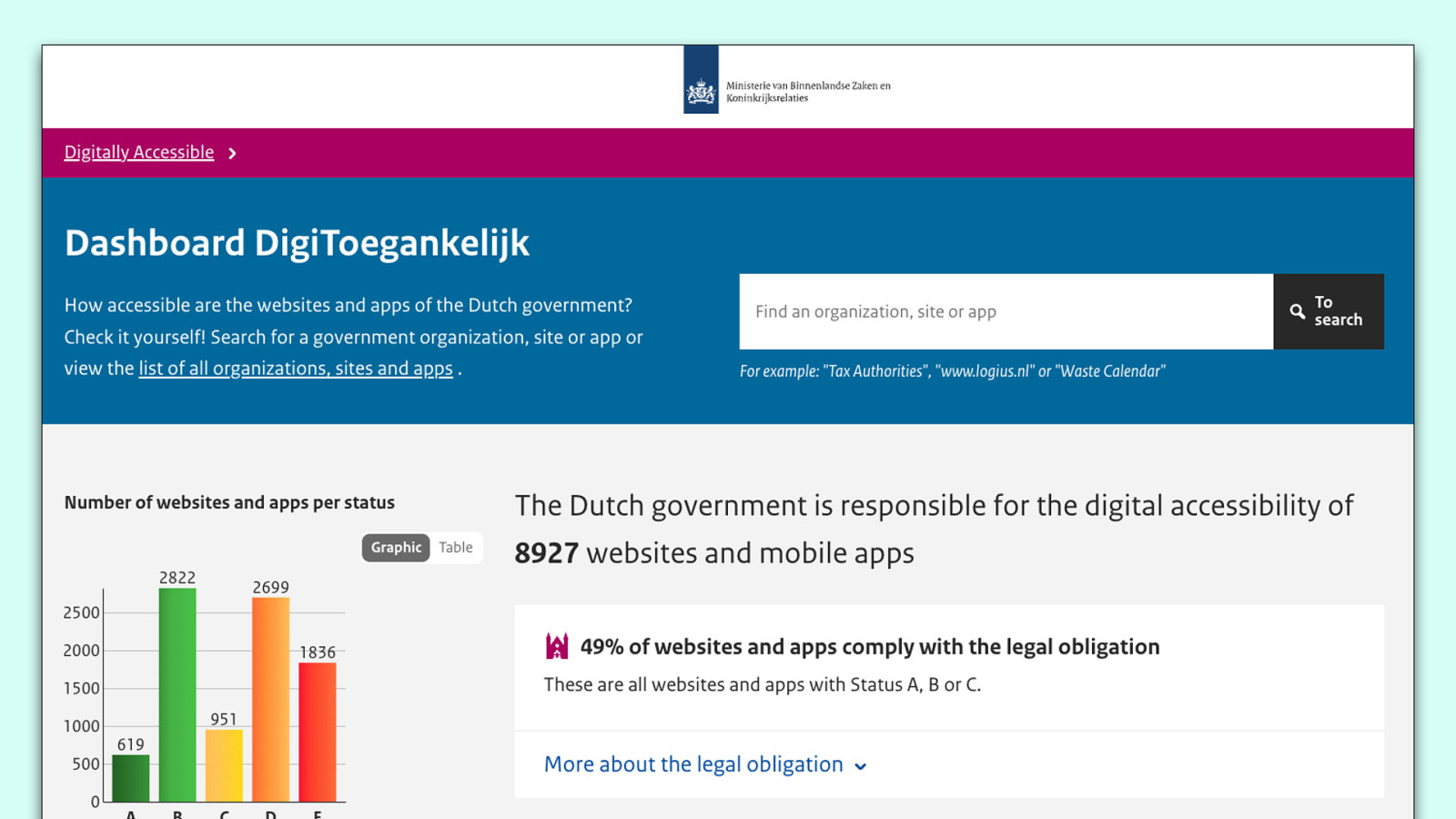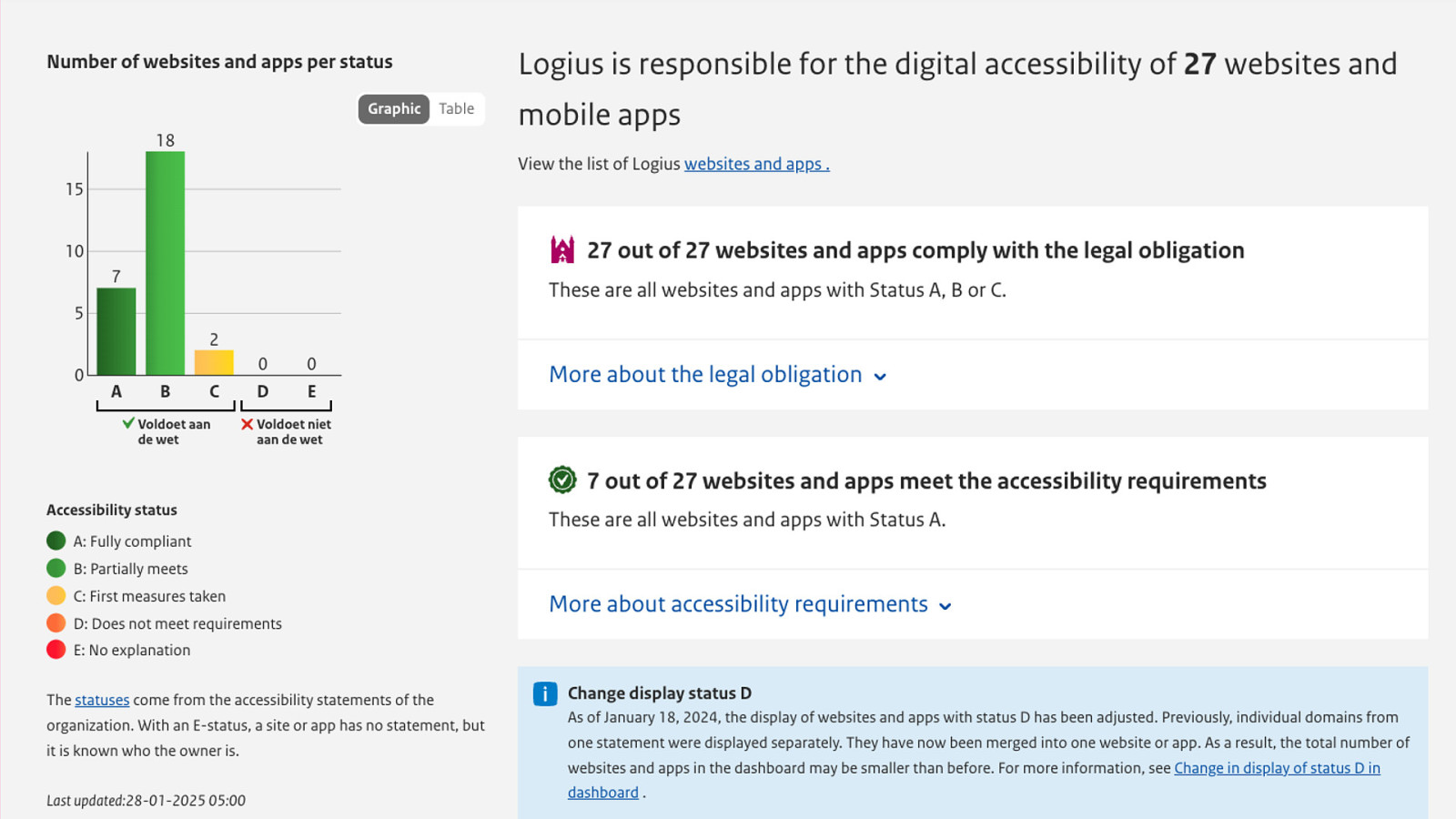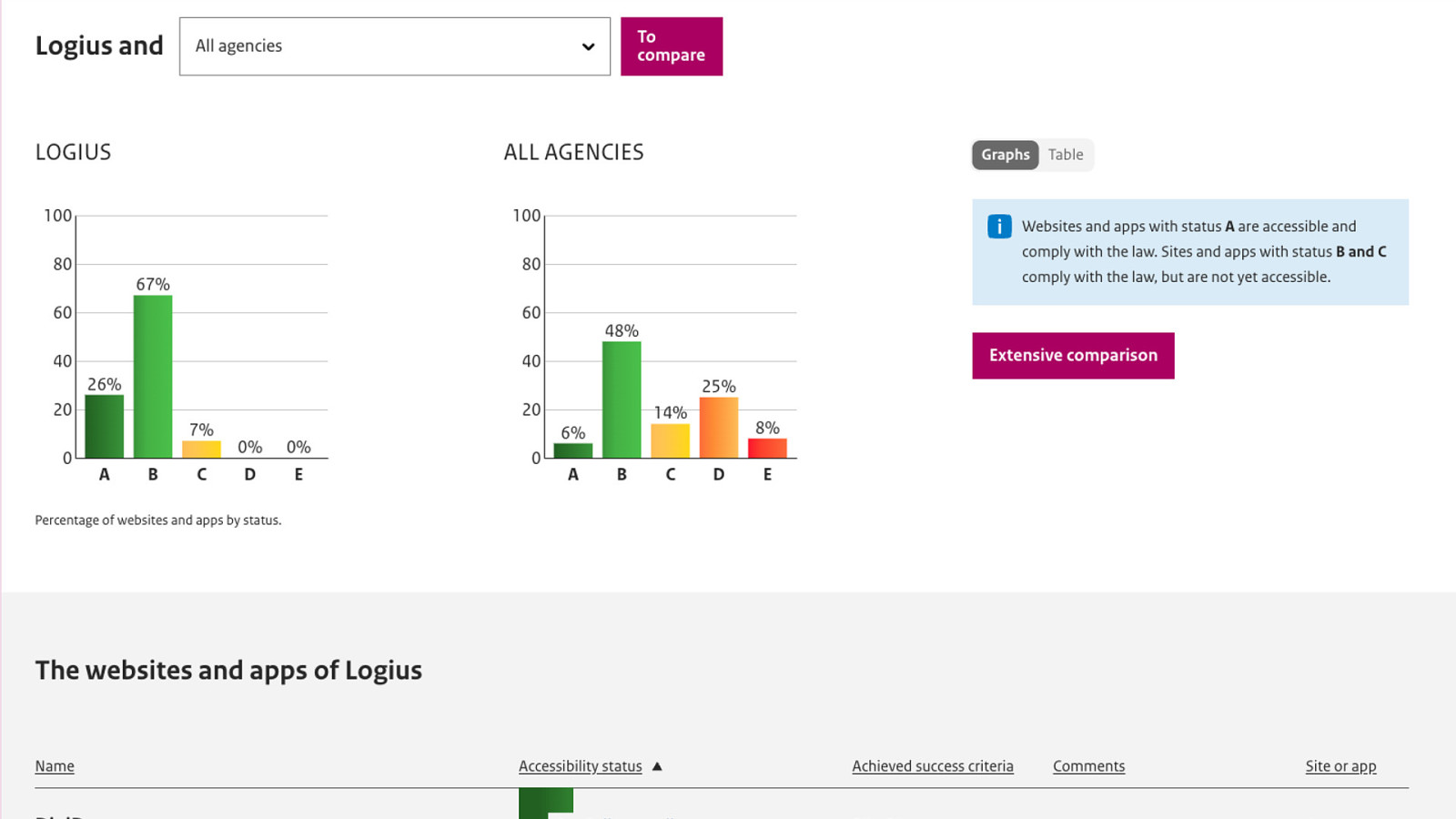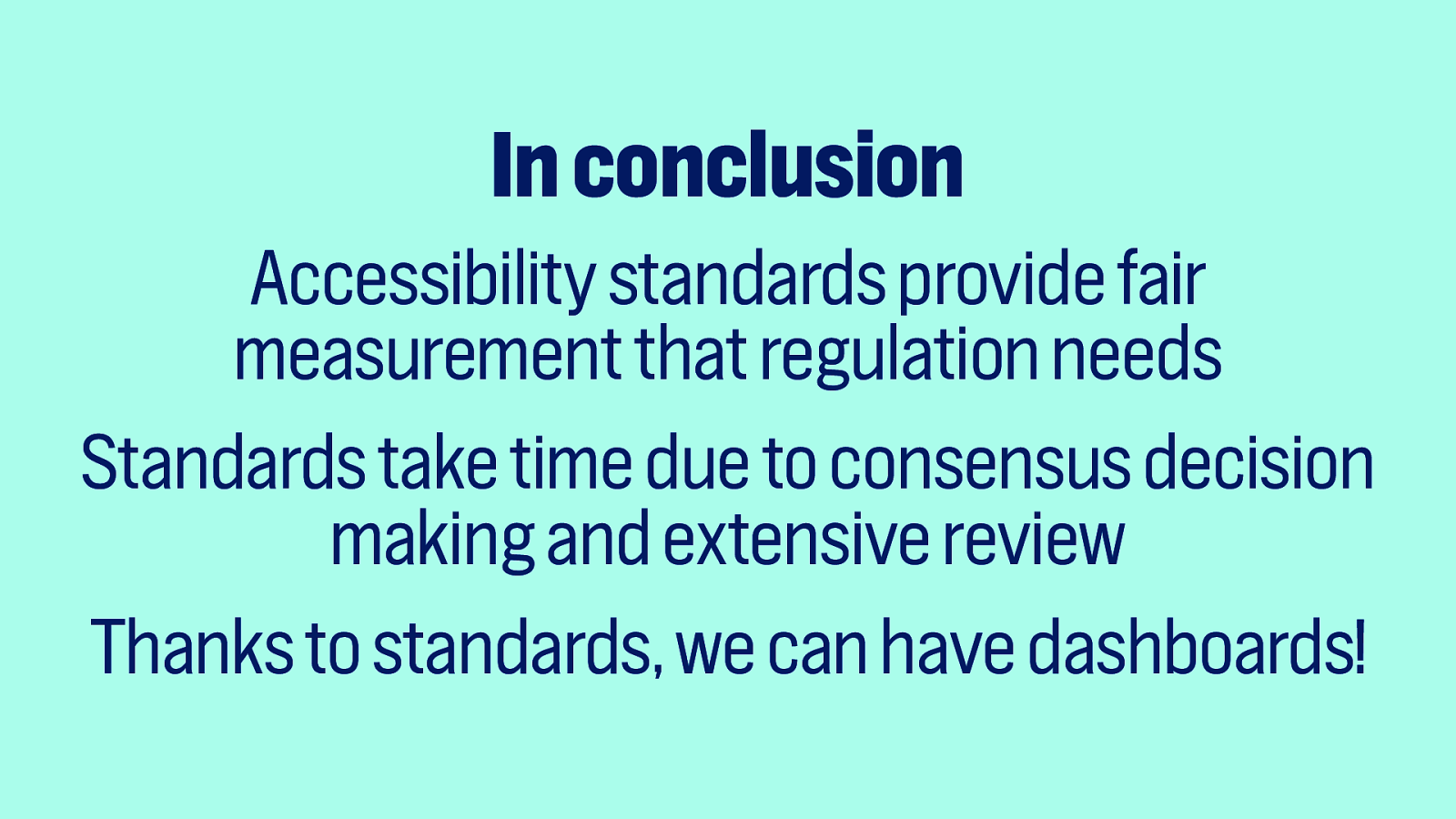Accessibility standards: a look in the kitchen
A presentation at User Centered Cities Cafe by Hidde de Vries
Across Europe, public sector bodies need to make their digital services accessible to people with disabilities. This is required by laws, like the Web Accessibility Directive in the European Union and the Public Sector Bodies Accessibility Regulations in the UK.
But how can we know if a service is sufficiently accessible? User testing aside, the accessibility of digital government services is often measured using accessibility standards. One such standard is the Web Content Accessibility Guidelines (WCAG). On the European side, so-called “harmonised” standards are the basis for the Web Accessibility Directive (WAD) for the public sector and the European Accessibility Act (EAA) for the private sector. And they even get adopted by governments outside the EU.
Standards are great: they set a clear baseline that is hard to argue with. And they give IT suppliers yet another reason to make their software accessible, as the standard enables them to assume it will be judged the same across borders.
How are these standards made and why does it take so long to create them? In Hidde’s talk at UCC Cafe, you’ll get an inside look.
Resources
The following resources were mentioned during the presentation or are useful additional information.
-
DigiToegankelijk dashboard
The Dutch government’s digital accessibility Dashboard
-
WCAG 2.2
